When I went ‘botanizing’ in Greece this autumn with the North American Rock Garden Society and guide Liberto Dario (Eleftherios Dariotis), I was delighted to be invited into a garden that evokes both the local agricultural vernacular and a romantic, rugged sense of place. Surrounded by olive-studded hillsides with the long-spined Mount Taygetus at its back and the sparkling Messenian Gulf at its feet, it represents that hard-to-achieve marriage of clean lines and pure poetry. Let’s walk down the narrow lane towards designer Katerina Georgi’s place in the Aghia Sophia area near Kardamyli.
Her home is surrounded by drystone walls which, in the Peloponnese, are a pervasive part of the landscape, defining ancient wheat terraces and stepped olive groves and marking age-old perimeters of family properties. There is just so much rock here and no need for mortar in constructing these walls, a technique called “en xiro”. Natal plum (Carissa macrocarpa) and jasmine soften the edges and perfume the air.
Come closer and you see that the drystone walls create the perfect enclosure for a raised gravel parking pad and a sexy little red car. Even here, you can see that the property – at 200 metres (656 feet) above sea level – is a series of elevation changes following the hillside from the mountain down to the seashore.
Let’s go through the lovely tile-roofed gate that frames the stepping-stone axis leading to the stone stairs of the house. The gate’s teal-blue wash is in keeping with much of the quiet blue-purple-gray-green palette in this garden, which depends more on foliage and form than flowers and colour. Nevertheless, reflecting the blues of the Ionian sea nearby, I found….
….. Ceratostigma plumbaginoides and Plumbago capensis in flower this early November day. (And when we meet her, it’s easy to see she does love blue.)
I’m quite sure most of us would take pains to line up each rectangular paver perfectly to match the next one – but how much more interesting a journey when they’re staggered ever so gently! We’ll go up the stairs to the terrace in a moment, but let’s meet Katerina Georgi first.
Born in London, she trained and worked as an interior designer for various practices before setting up her own consultancy there. After studying and working with the renowned John Brookes (1933-2018), she expanded into garden design. Since moving to Greece 26 years ago, her focus has been on the design and renovation of old, stone houses like her own and the creation of drought-tolerant Mediterranean gardens. Not surprisingly, she has played an active role in the Peloponnese Branch of the Mediterranean Garden Society here, along with her friend and our guide Liberto.
Let’s listen to him introduce Katerina and find out more from her about the garden.
As Katerina said, when she bought this house in 2009 it had no running water, sanitation or electricity. Its previous owner was a single man who lived a Spartan, solitary life: keeping goats, gathering water from a spring below the house, cooking his meals in an open fireplace and often carrying a shotgun (which did not endear him to the community). The good news? The goats had left a valuable supply of well-rotted manure which Katerina laboriously relocated to keep it from being contaminated during the building process. When I visit the guest room – the former goat shed – to have a glass of water, I am surprised to find his photo in a wall niche. Says Katerina: “I like the idea of continuity, so his photo is a link with the history of the house.”
Katerina began renovation work in the spring of 2010, excavating out the lower level of the house and using the sandstone spoil as the base for planting beds nearby and as a granular additive to poured cement to bring the paving colour and consistency closer to the stone house. You can see this treatment in the pavers of the raised terrace on the right as you enter the garden, with its small fig tree, a splash of bougainvillea……
….. and potato bush (Solanum rantonnetii).
There are carefully-chosen plants everywhere, including these grasses softening the house wall.
To the left of the gate as you enter, down a few steps and hidden behind a bower of rosemary buzzing with honey bees…..
…… and myrtle-leaved milkwort or September bush (Polygala myrtifolia)……
…… is a sheltered sitting area under a pergola with comfy teak furniture – and those stunning rock walls. Serenity is clearly the mood here. For me, the various seating areas – and there are quite a few in this garden – bring to mind Katerina’s mentor John Brookes, who himself espoused the philosophy of California landscape architect Thomas Church. “Gardens are for people.” This garden is most definitely for people, and the plants play a useful but secondary role.
It’s difficult to decide whether to climb up the house steps or head down into the garden but let’s go upstairs to the terrace around the house and get our bearings. Here we look back at the gate and driveway. I love the lushness just a few containers bring to a setting like this.
Now look south. Though I can’t make out details, I can tell you that there are a lot of olive trees on that hillside, for Kardamyli is very close to Kalamata – and if it weren’t for this region, Greek salads the world over would be very sad indeed.
Let’s walk along the terrace to the dining table. Here’s the view down the hill out over the little church of Aghia Sophia west to the sea. The church gives its name to this small village.
Summer temperatures here on the Mani Peninsula are hot so plants in pots need to be especially tough. These lovely succulents fit that bill. Gutters direct rainwater from the roof into an underground cistern; in hot periods, that water can be pumped into needy areas of the garden.
Looking down towards the garden, below, and what Katerina calls a “series of amphiteatrical steps” leading to a naturally-filtered swimming pool, we see Mediterranean plants she has selected for year-round interest and their ability to survive drought. The soil for the planting beds came largely from the level below near the old olive and fig trees. And we see how the various garden and sitting areas are informed by grid, another John Brookes tenet. As Robin Lane Fox wrote in his column eulogizing Brookes: “His drawings applied a simple ‘grid system’ to each site, basing it on proportions he found in the house or the main rooms inside. He insisted that this grid unified a garden and helped its designs to flow.”
Going down the stairs, we see another criterion Katerina looks for in plants, “…growth habit – specifically the plants’ ability to spread and soften the edges of the hard landscaping.”
To give cohesion and continuity to the design, she repeats key plants like lavender, teucrium, santolina and rosemary. Terracotta accents repeat as well.
A ‘Grassy Lassie’ aloe picks up the orange tones nicely.
Past the last cloud of blue plumbago, we’re almost down to the pool level.
I adore the hardscape treatments and the careful consideration of colour and the size of the aggregate between the pavers. They add so much to the landscape here.
Now we come to the enticing swimming pool, surrounded by figs and olive trees with the evocative Mani landscape in the background. Though it looks like a conventional pool, there is no chlorine treatment here. As Katerina says: “The pool is filtered by a skimmer (complete with its own lizard ladder), a sand filter, which fixes the phosphates, and another bio-filter which traps particles in a series of mats.” Katerina believes this system is the first of its kind in Greece.
Just another perfect detail.
The lowest terrace hews closest to the property’s origins with an old stone aloni or grain-threshing floor as the centrepiece. Says Katerina: “Clearly many years had passed since it had been used to thresh wheat and, over time, a layer of soil containing assorted bulbs had built up, so that the rock was barely visible. This excess soil was stripped off to reveal the rock, and the bulbs replanted. Thyme is gradually being introduced and this will eventually spread and fill the fissures in the bedrock.” Planting in the low part of the garden was begun in the autumn of 2014. The intention is to keep it looking natural so it blends with the landscape beyond and allows easy access for olive picking.
Viewed from the lower level, we see the aloni’s round contour mirrored in a new, curved, stone retaining wall, with new steps….
….. built on either side to connect the two levels.
And back towards the house, another perfect little seating area.
There are abundant wildflowers in spring on the lower level. When they’re in bloom, she cuts a path through them to allow circulation until they die down and the entire area can be cut back with a string-trimmer. Now, in November, cyclamen is in flower. I ask Katerina if she uses the fruit of the cactus pear tree or “fragosyka” (Opuntia ficus-indica) which we’ve seen growing wild troughout the Mani. “I don’t use the prickly pears,” she says “as I find the flavour very bland, and not worth effort of cleaning them, but one of the locals sometimes comes and picks them”. A final look around the old part of the garden with its rustic gate opening…
… and we head up the stairs. I spy a rough plank bench in a niche with French lavender nestled against it, and I think how lovely it would be to sit there on a summer’s day as the warmth of the Mani sun traps the fragrance. And I note the perfect cascading burro’s tail (Sedum morganianum) and the allium seedheads at a door, a memory from another season in a beautiful Greek garden that honours memory and celebrates place.

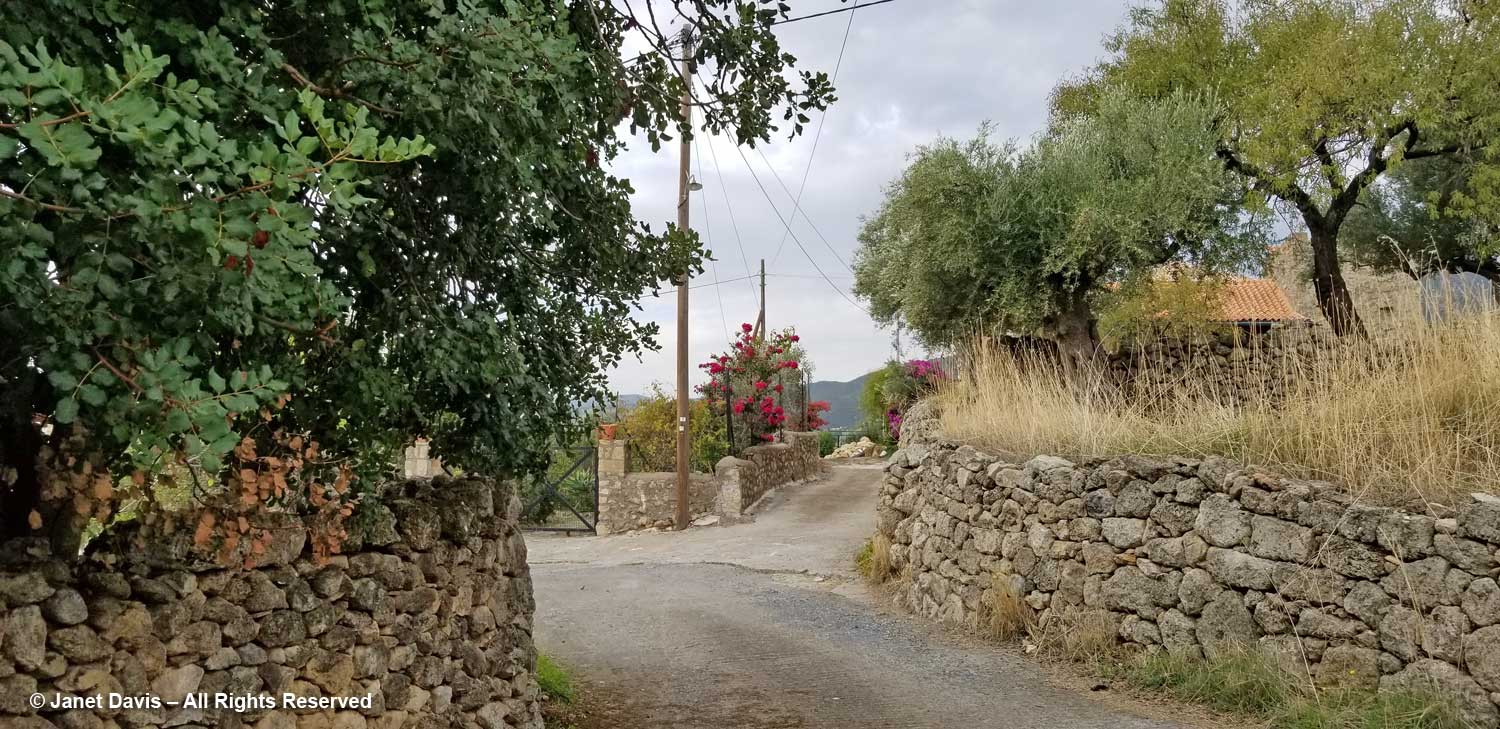
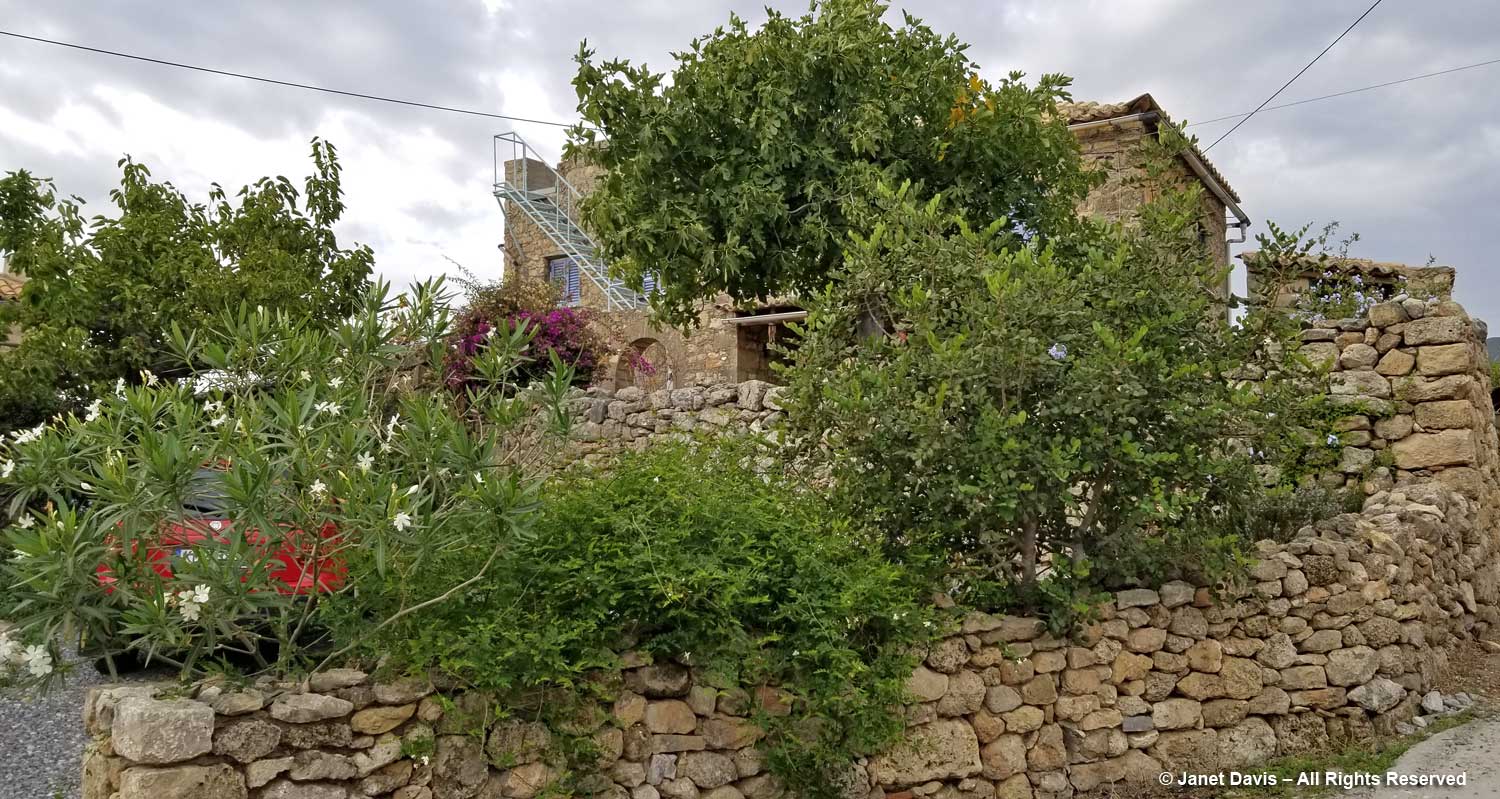
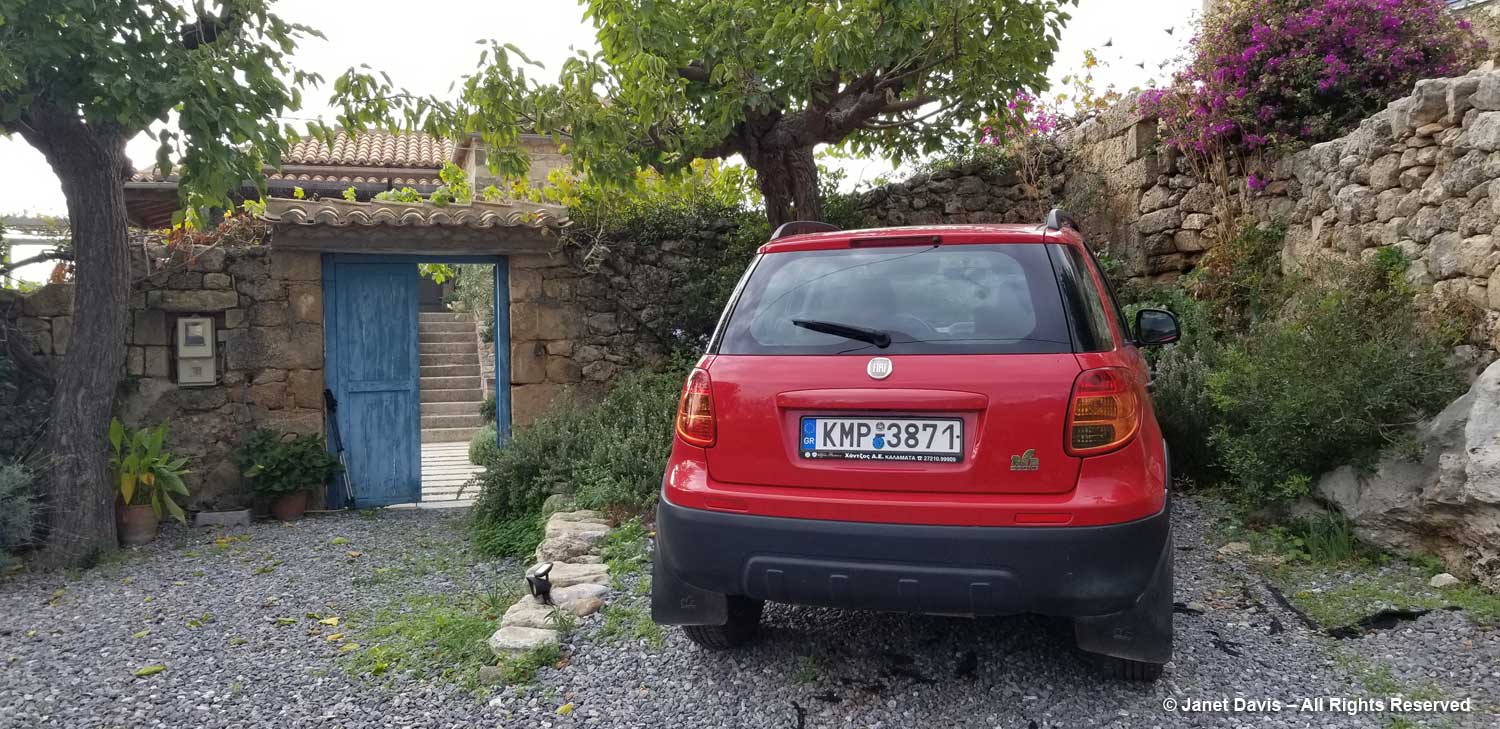
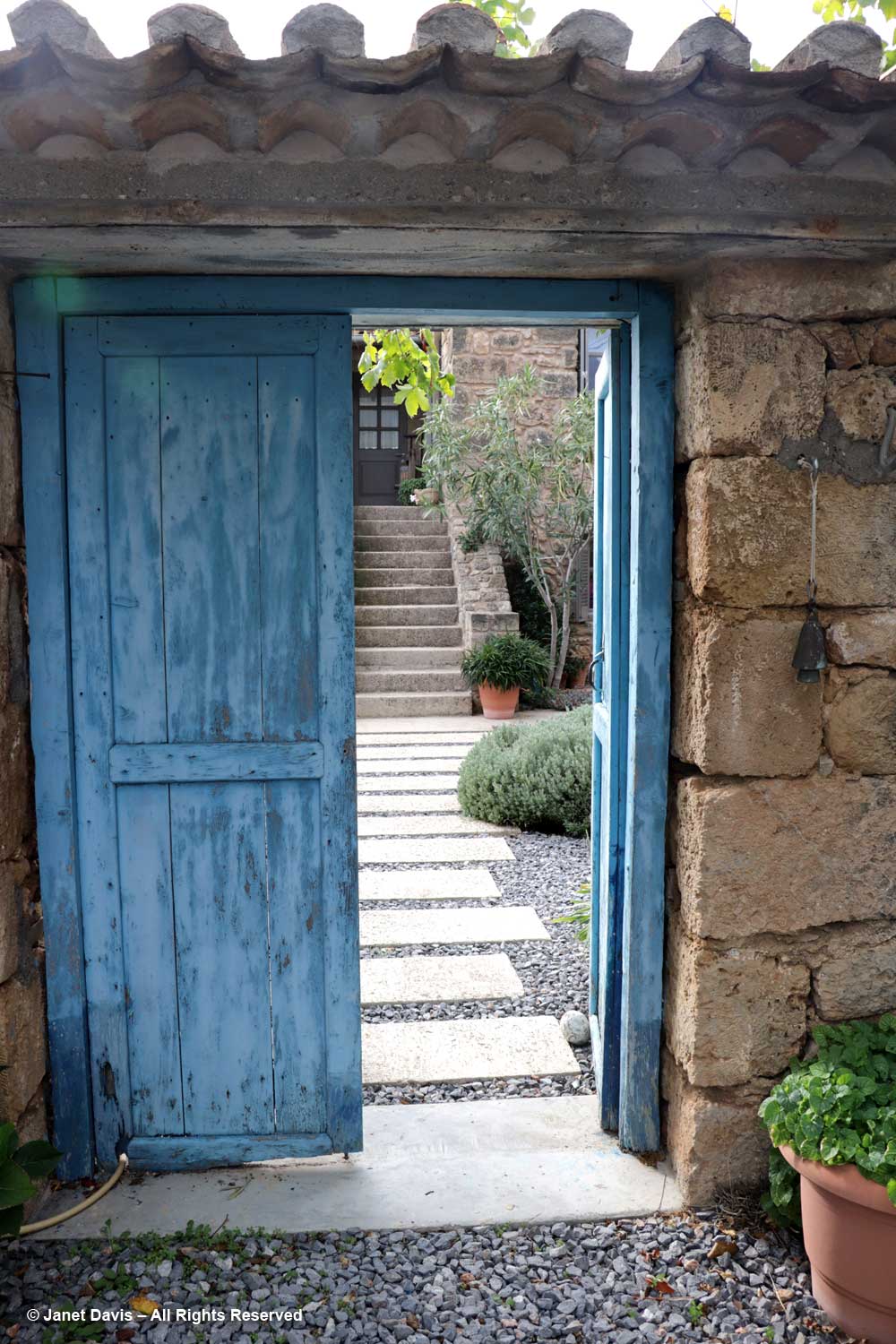
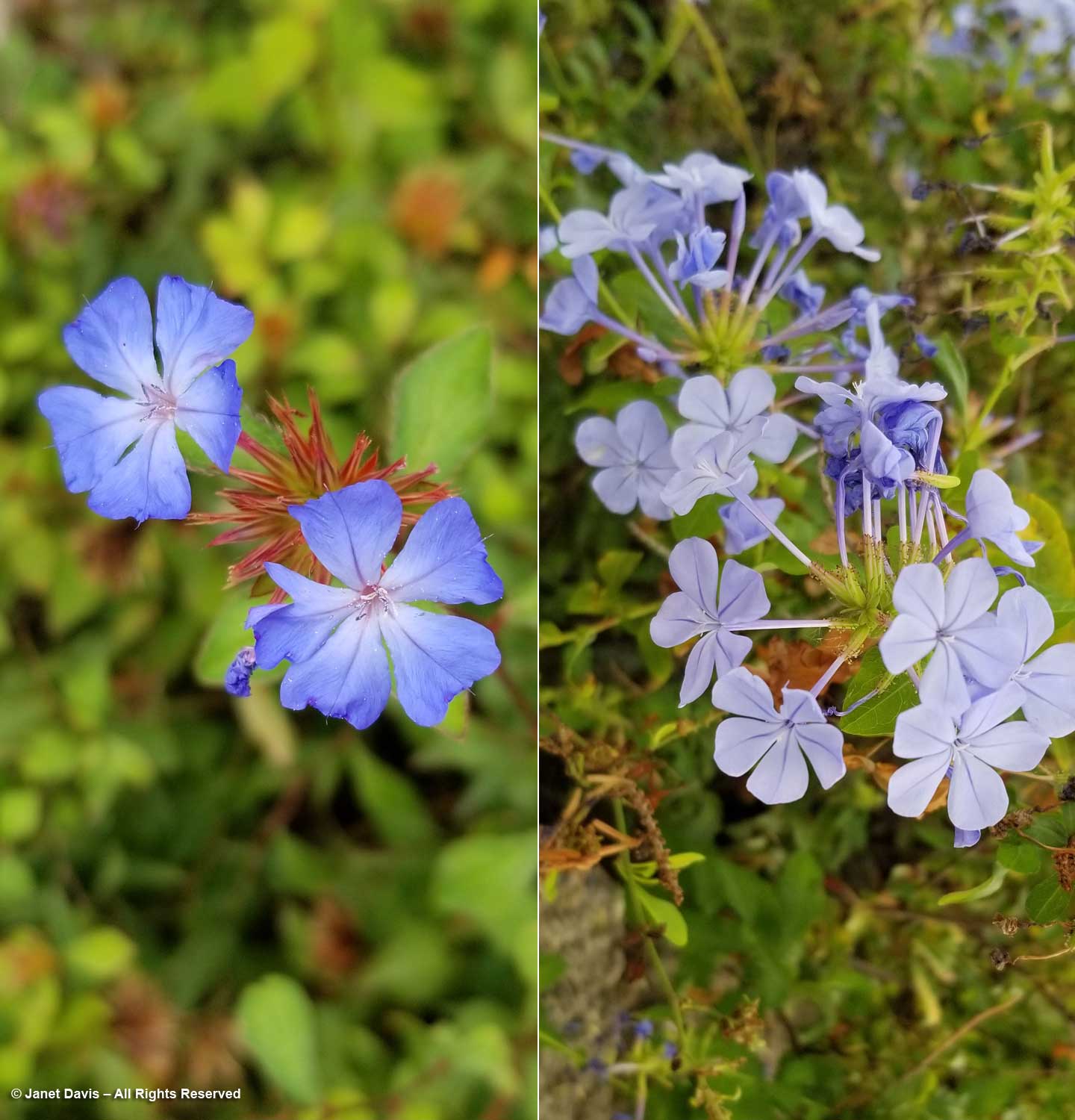
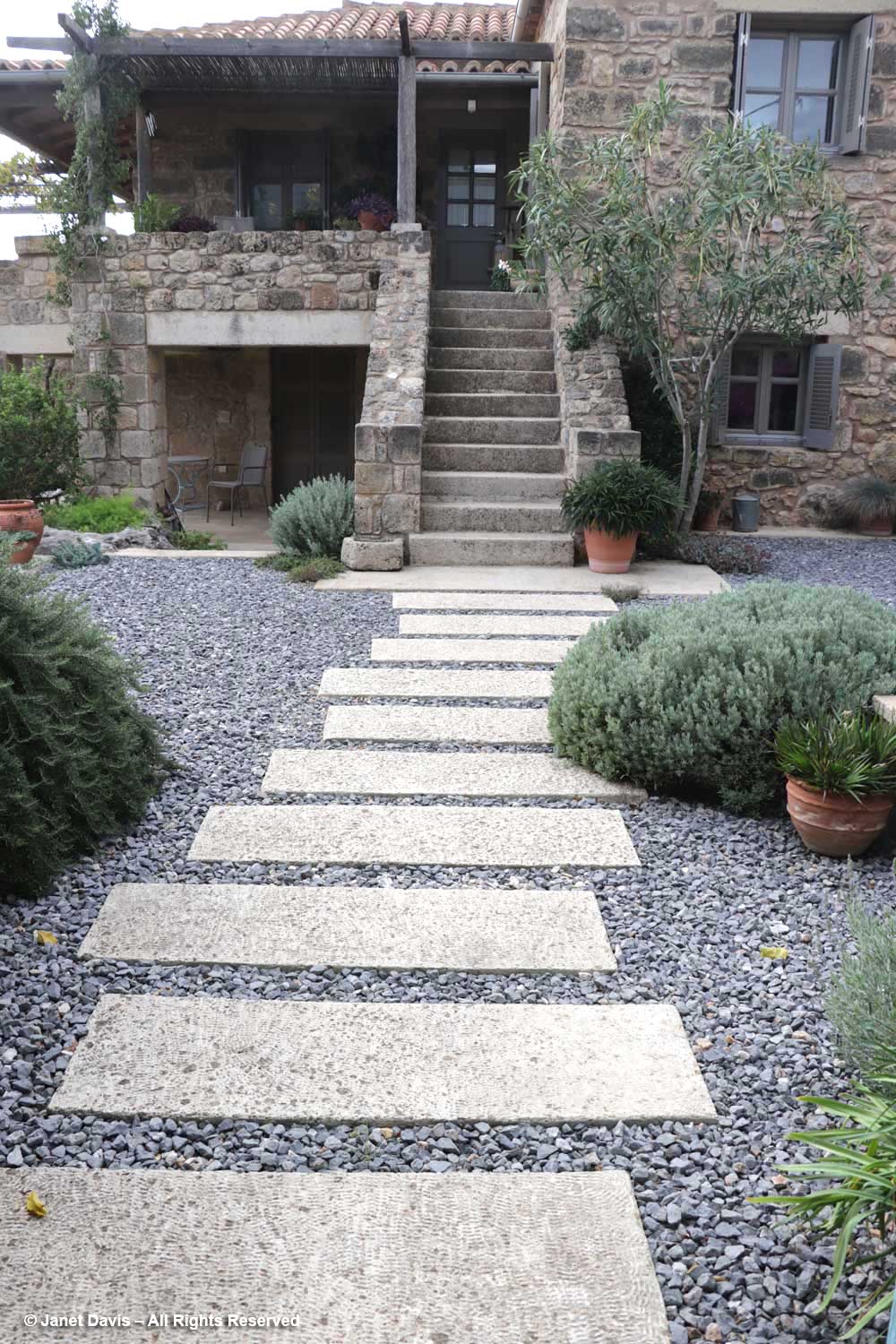
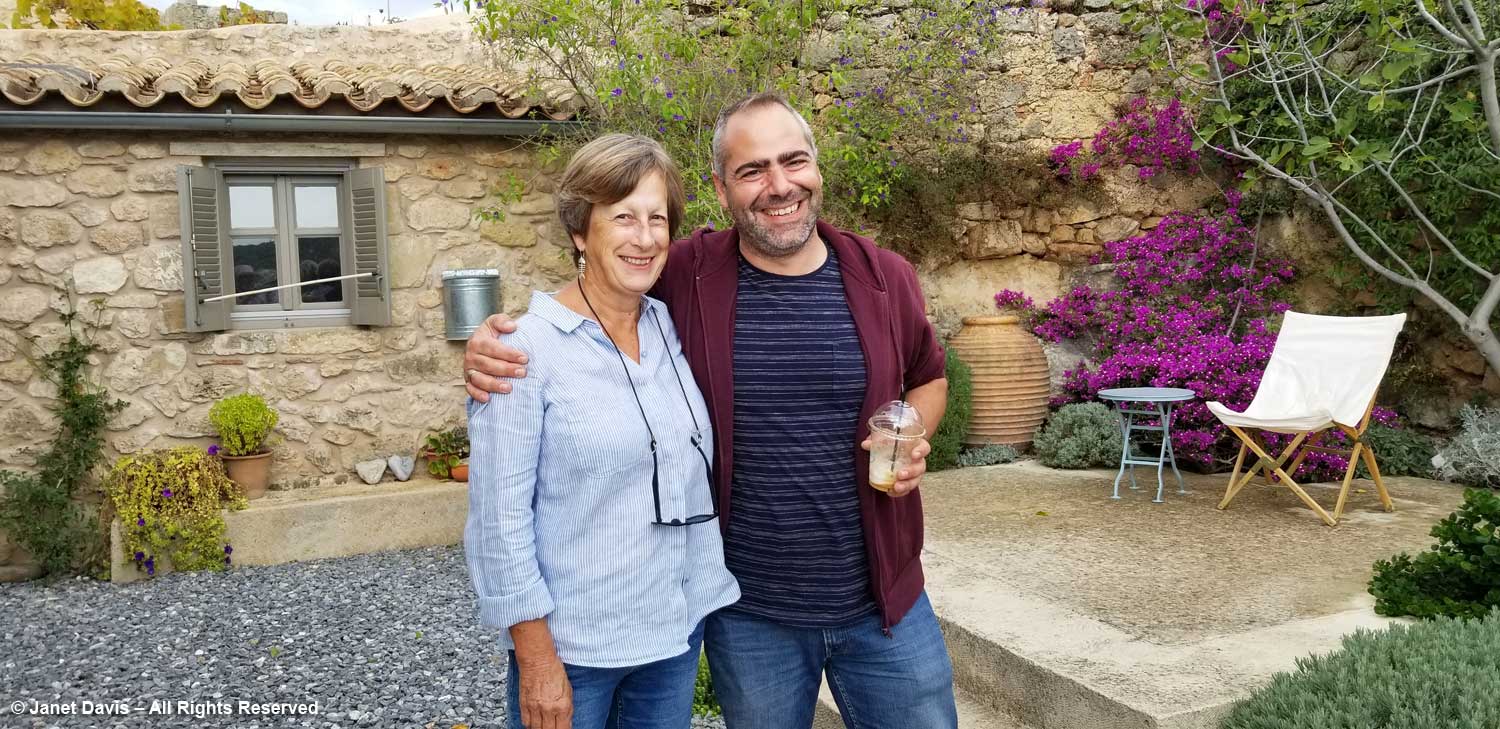
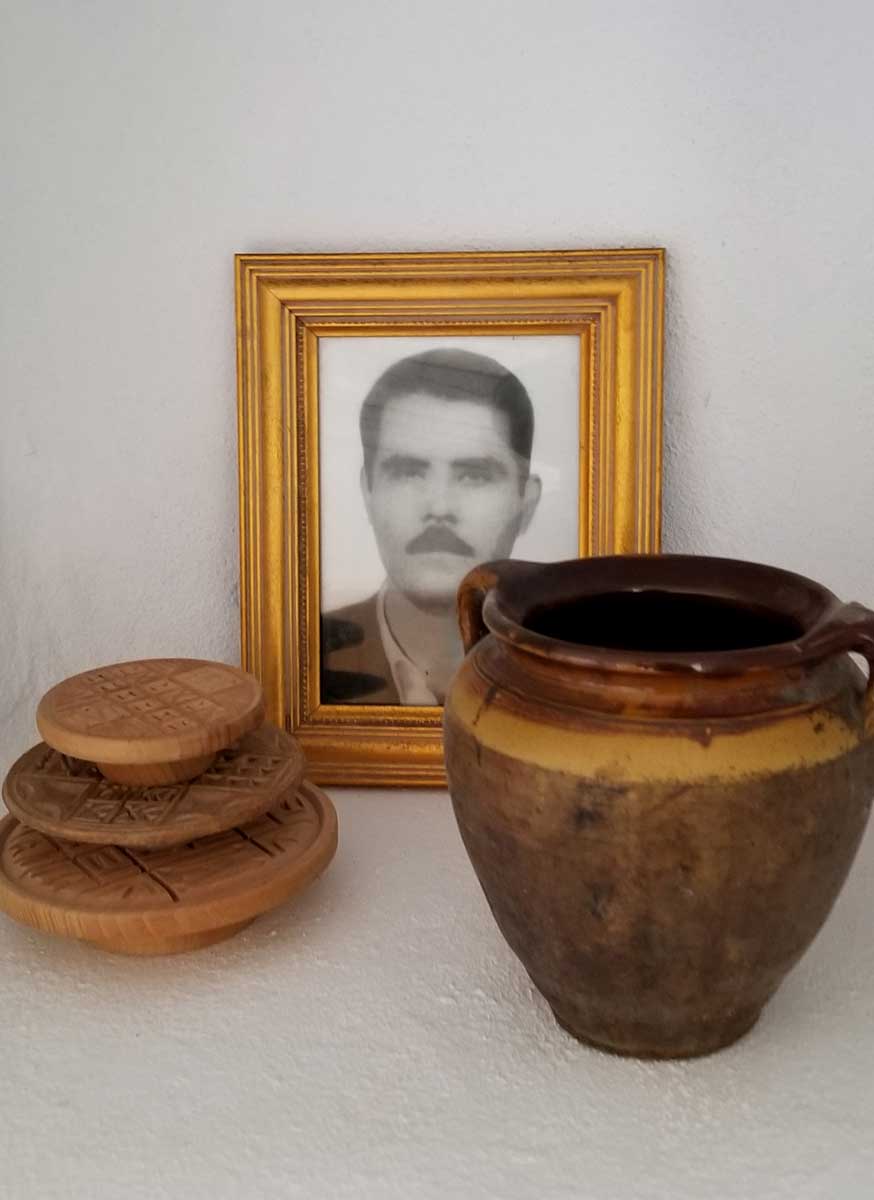
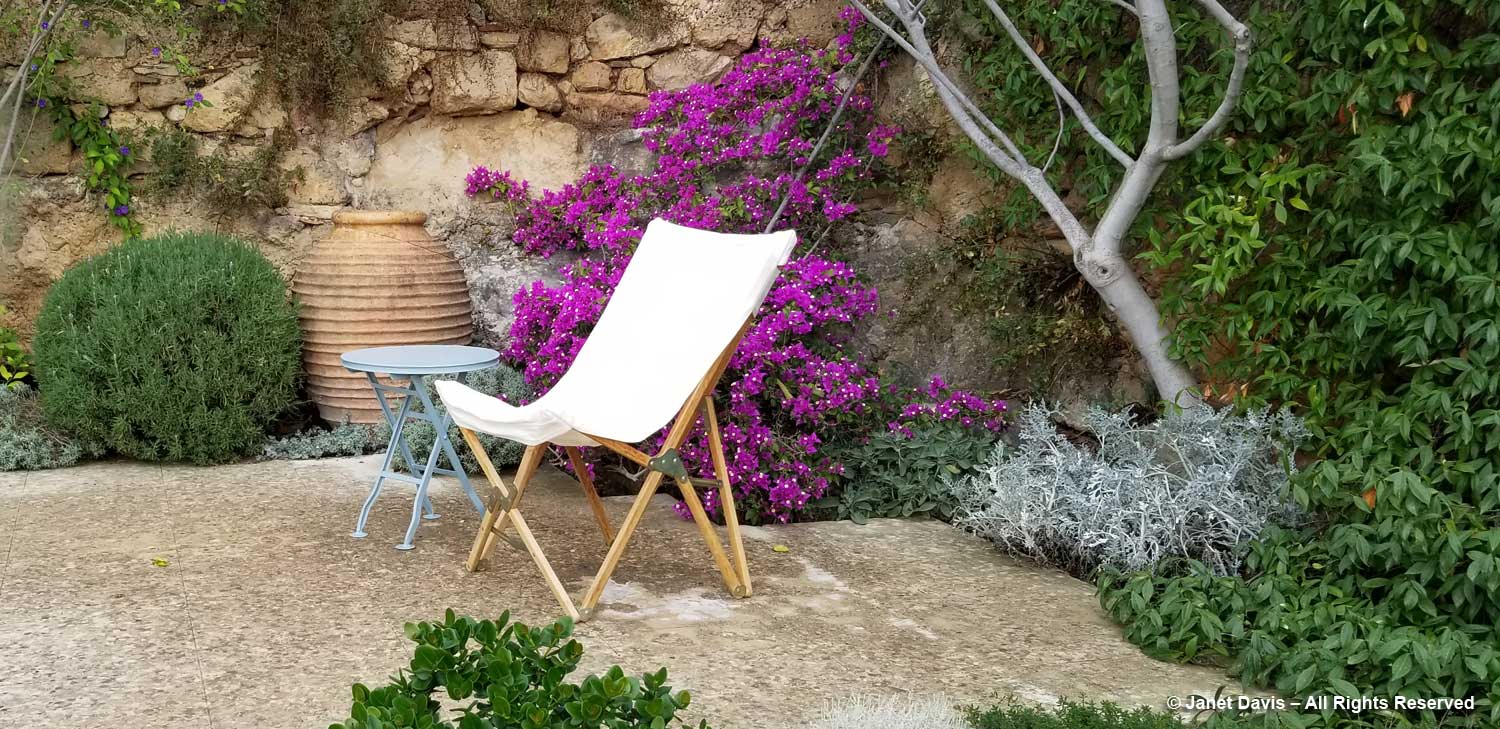
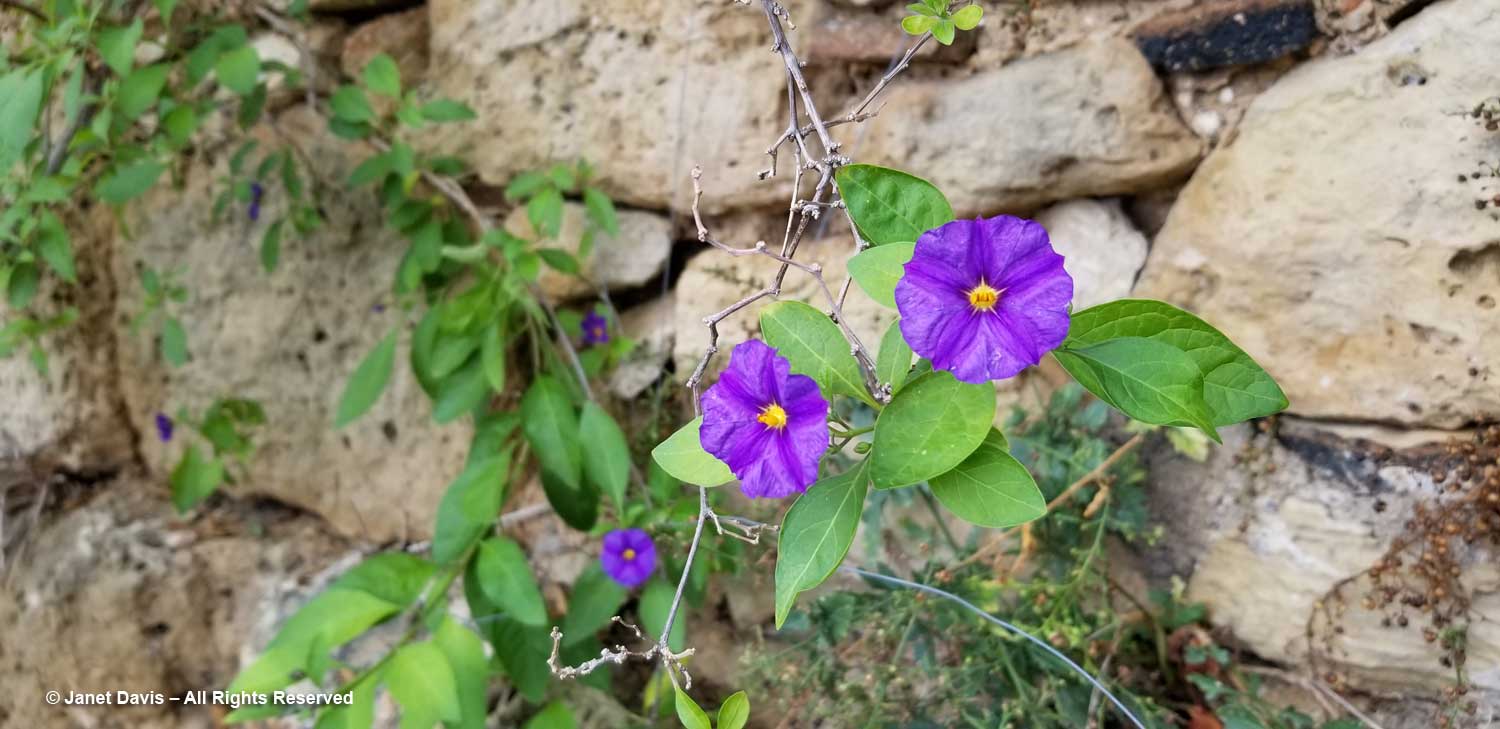
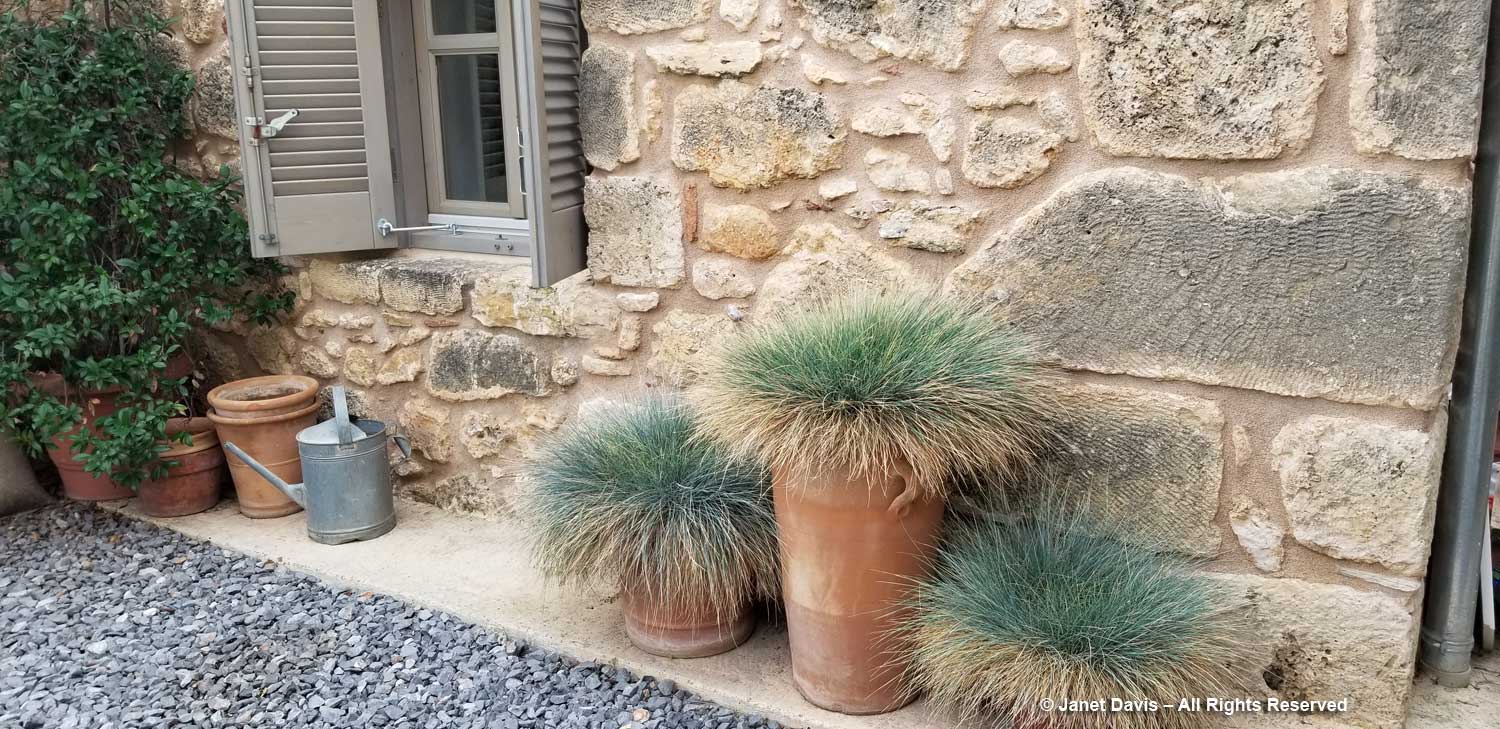
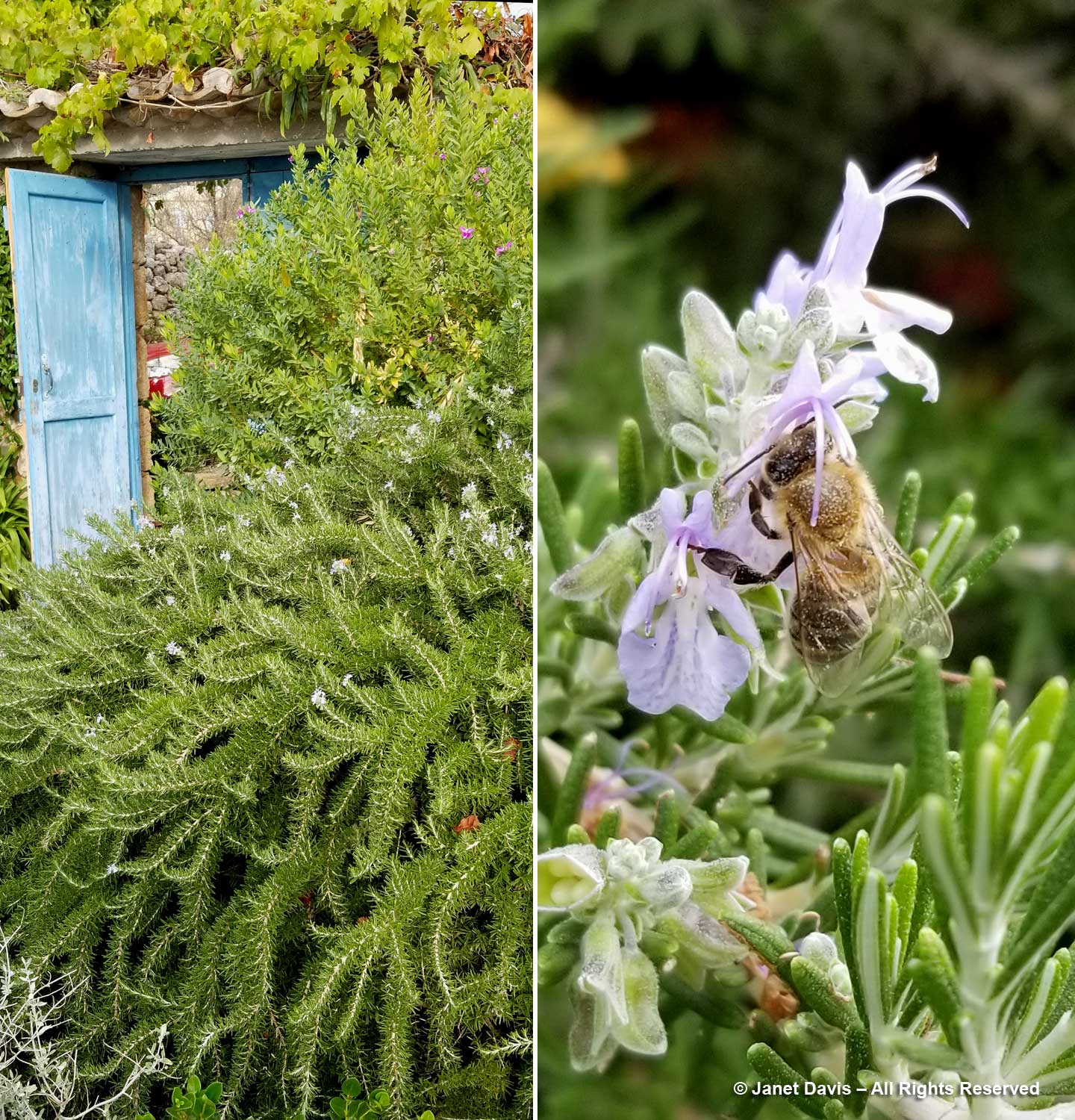
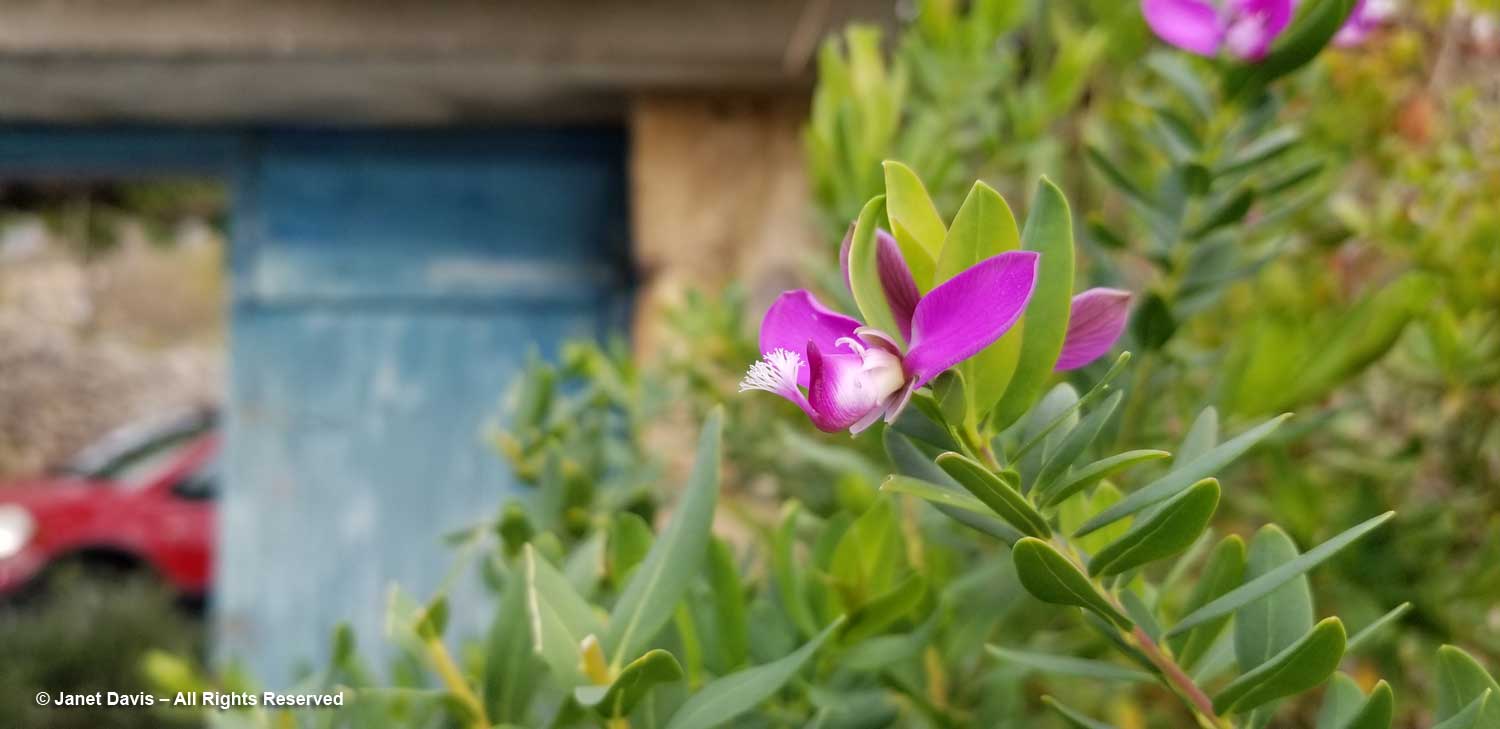
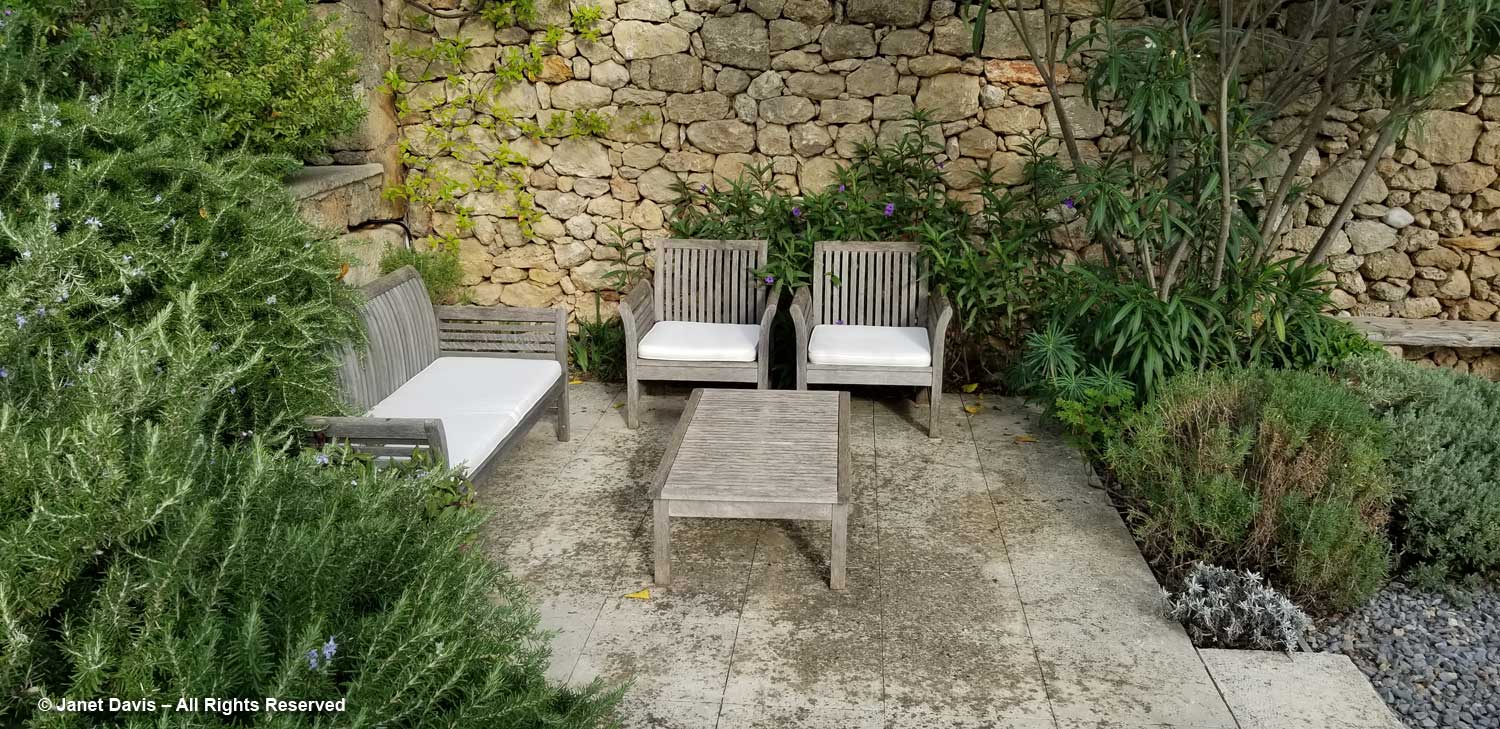
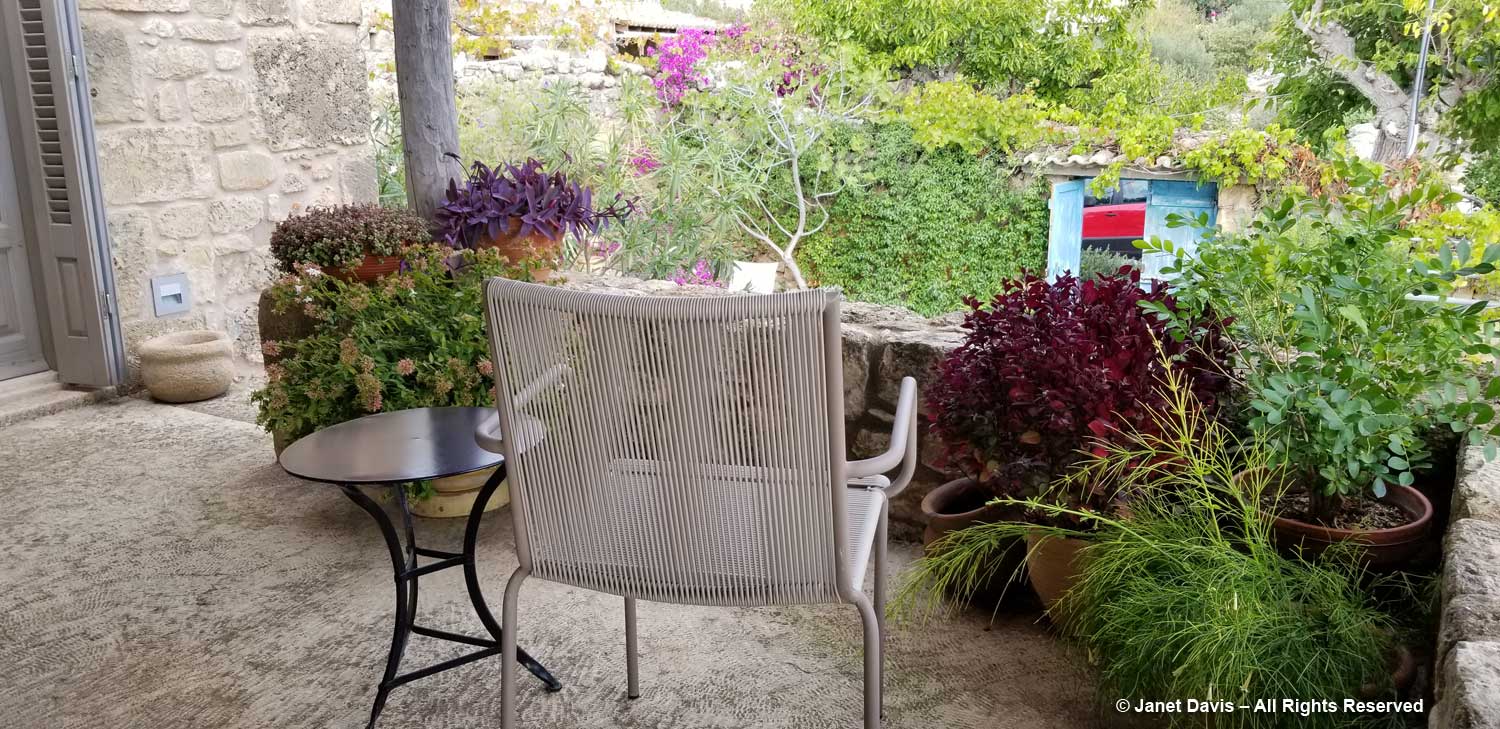
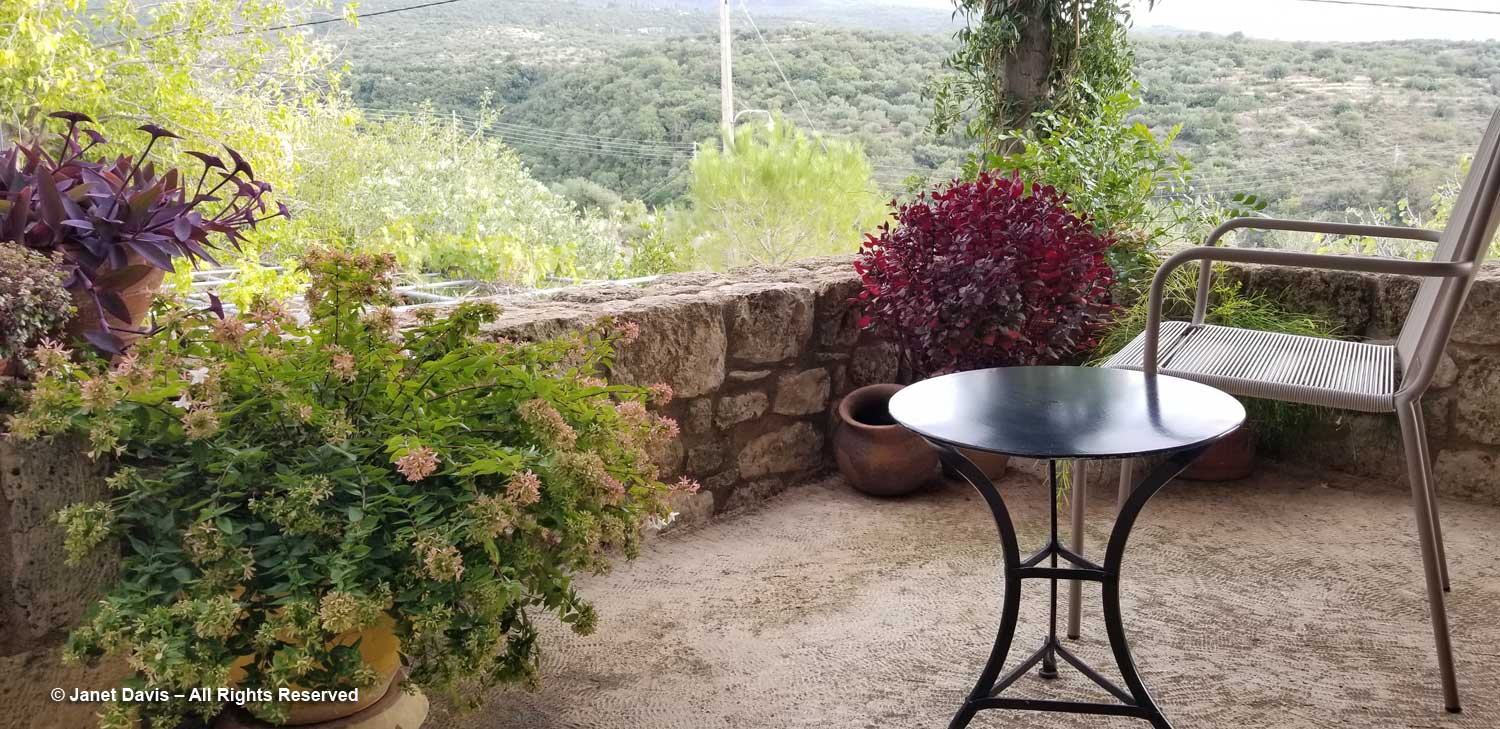
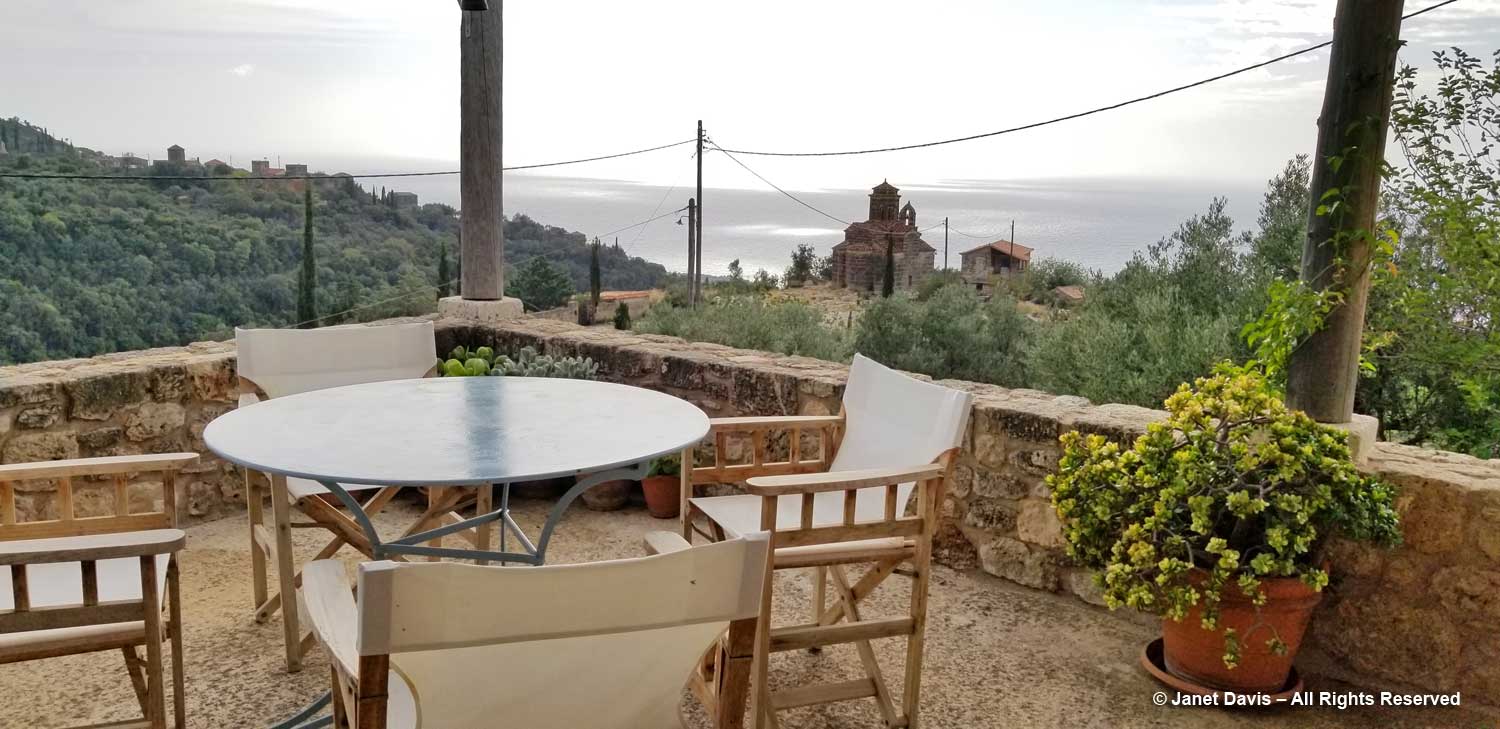
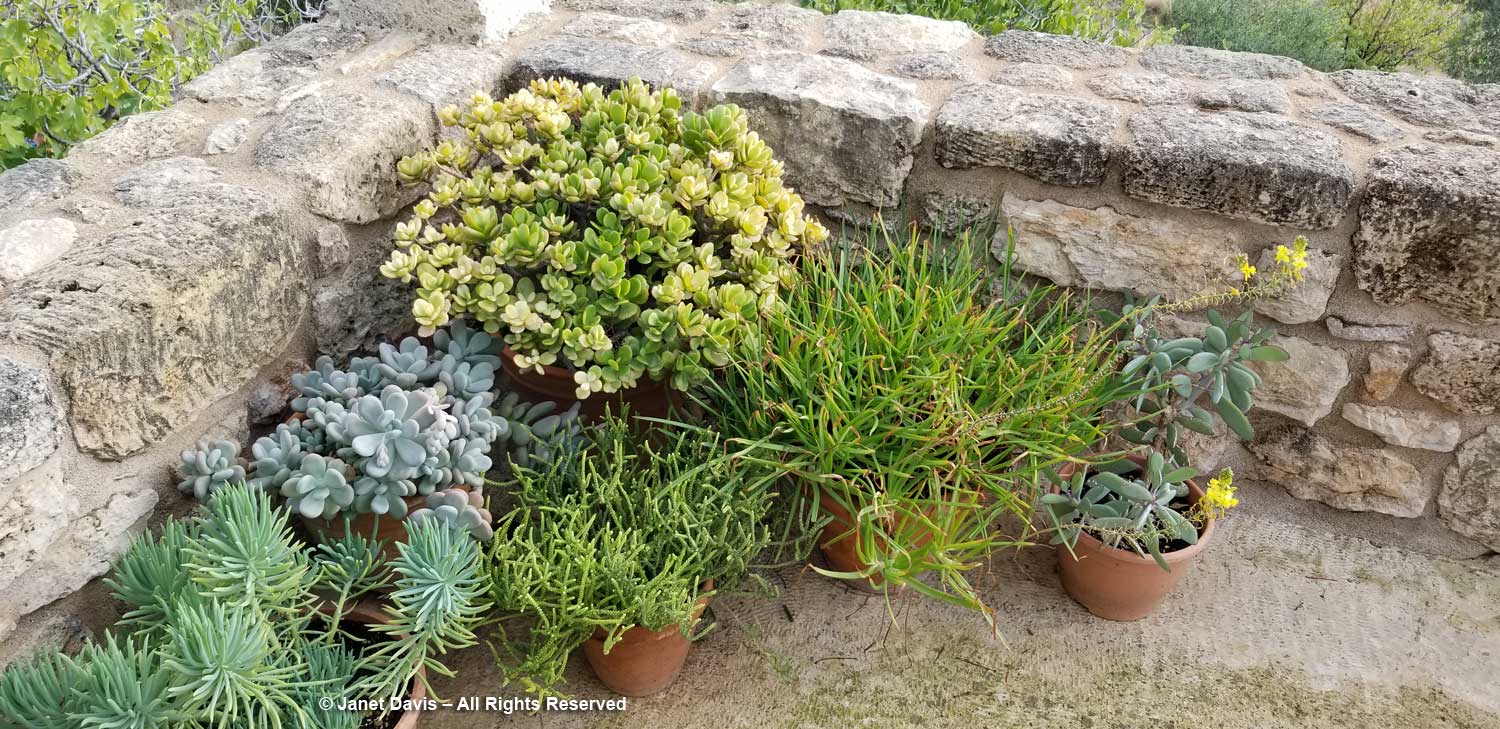
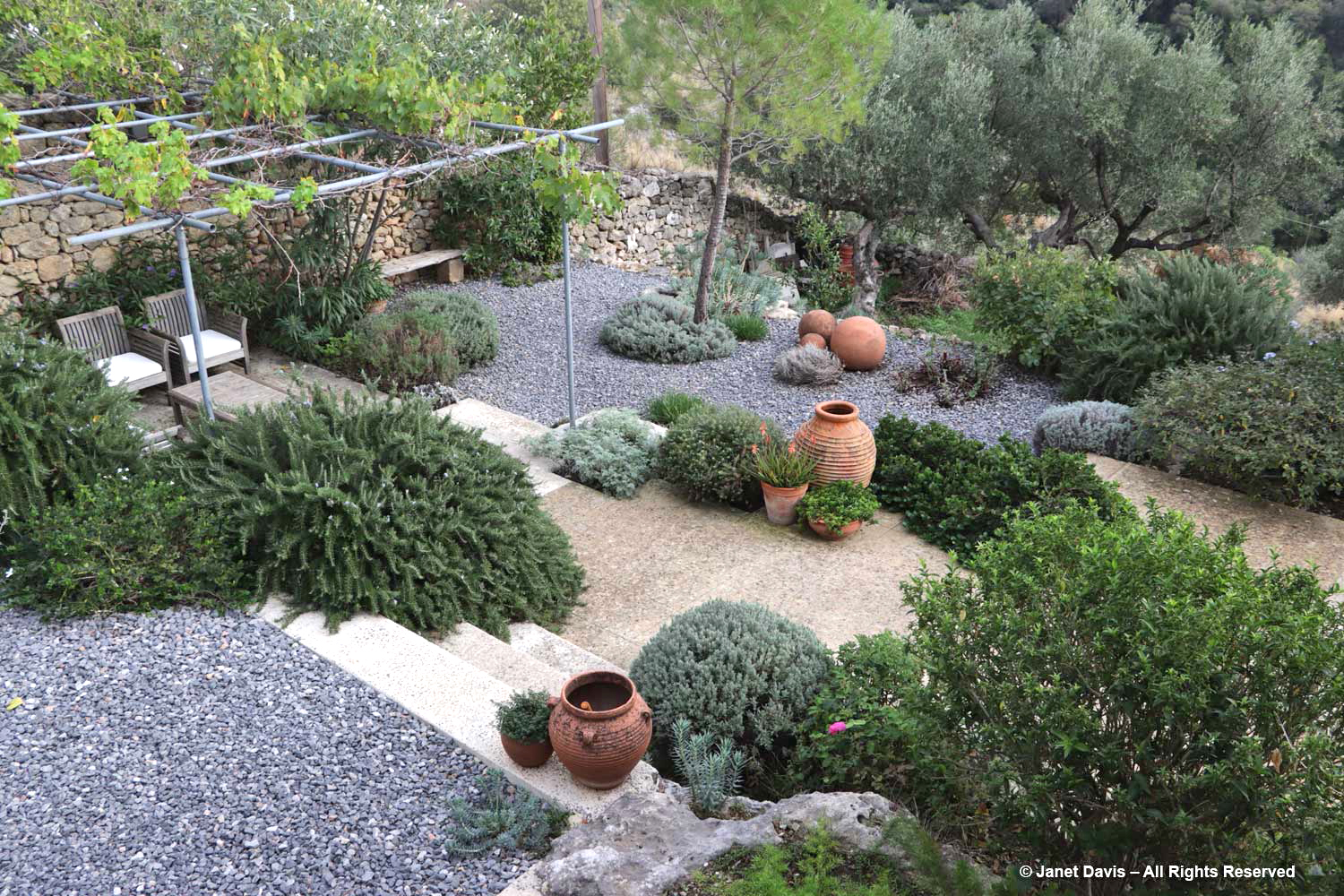
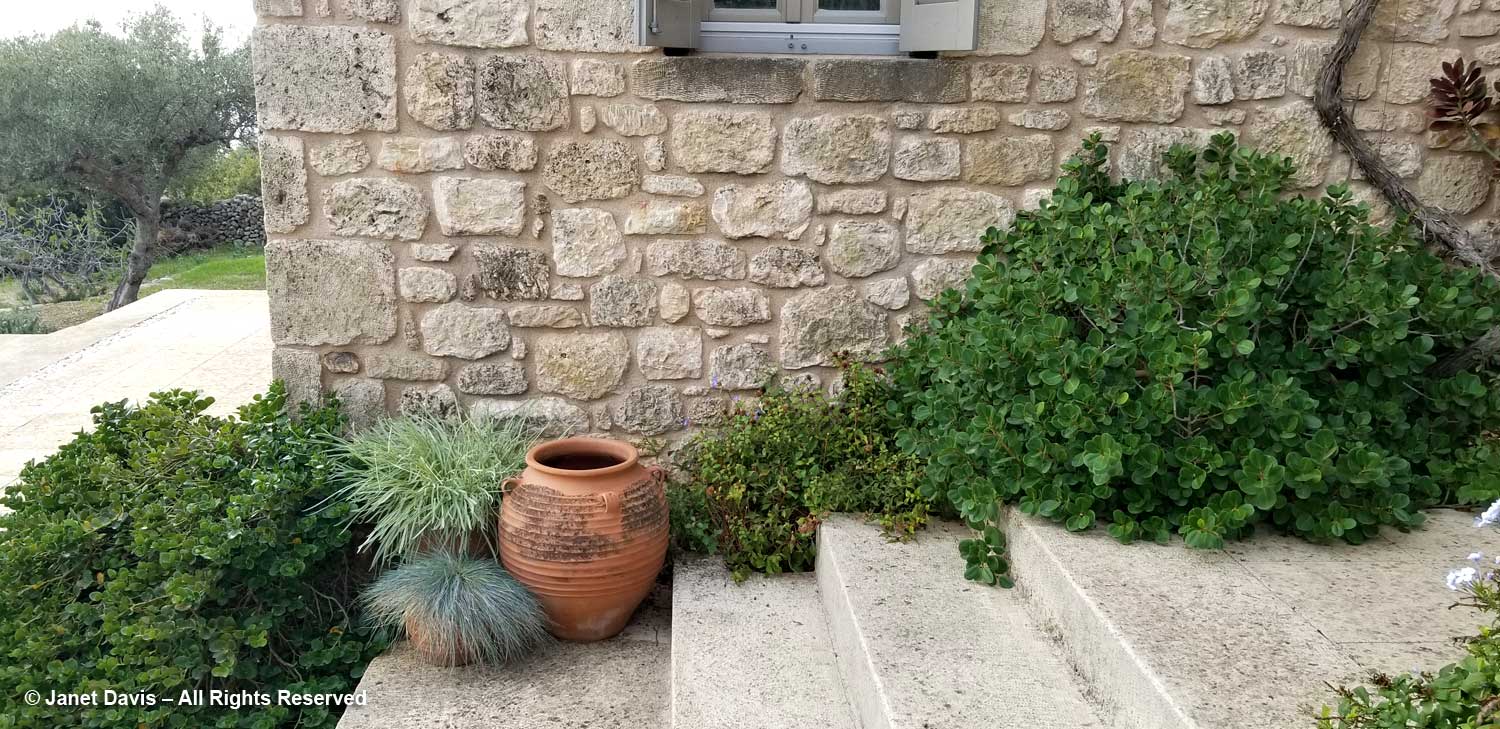
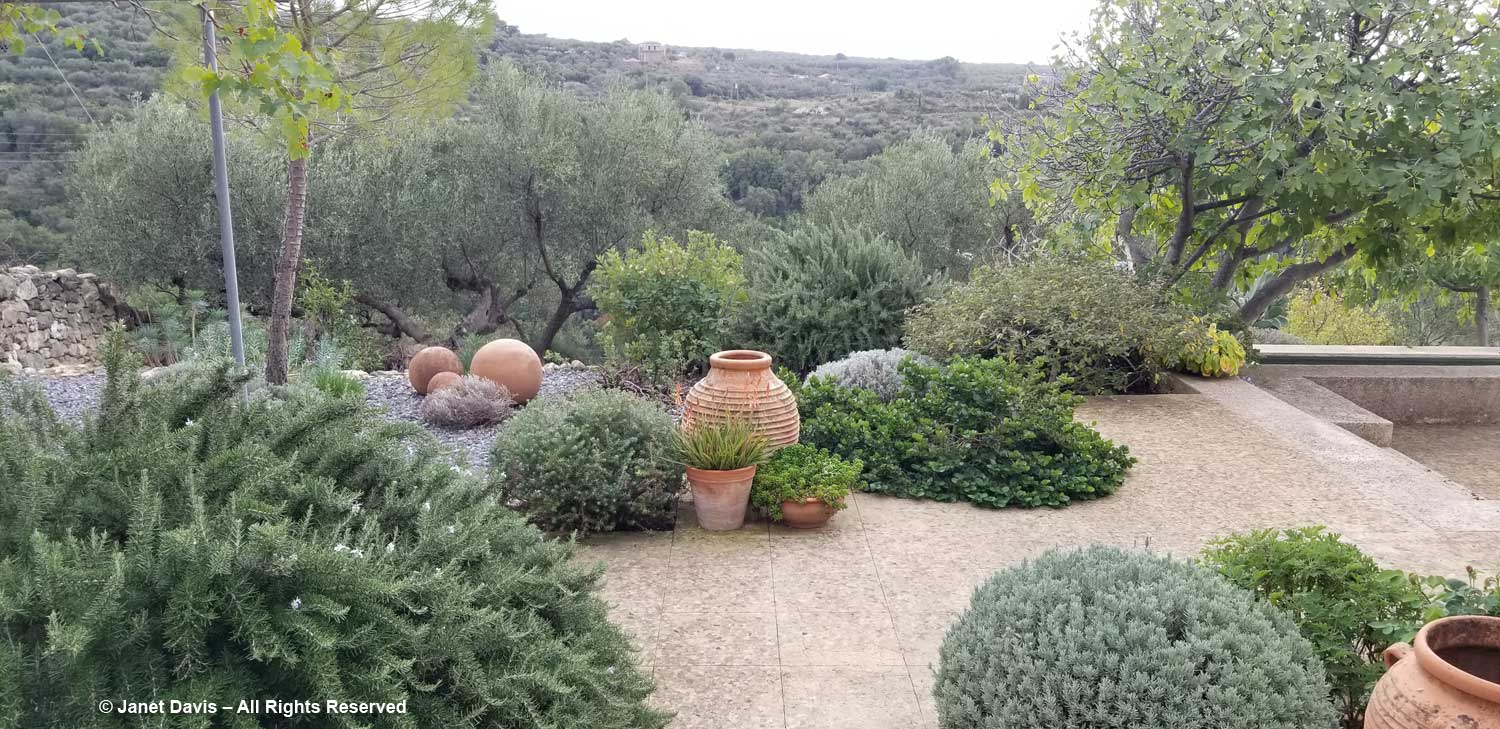
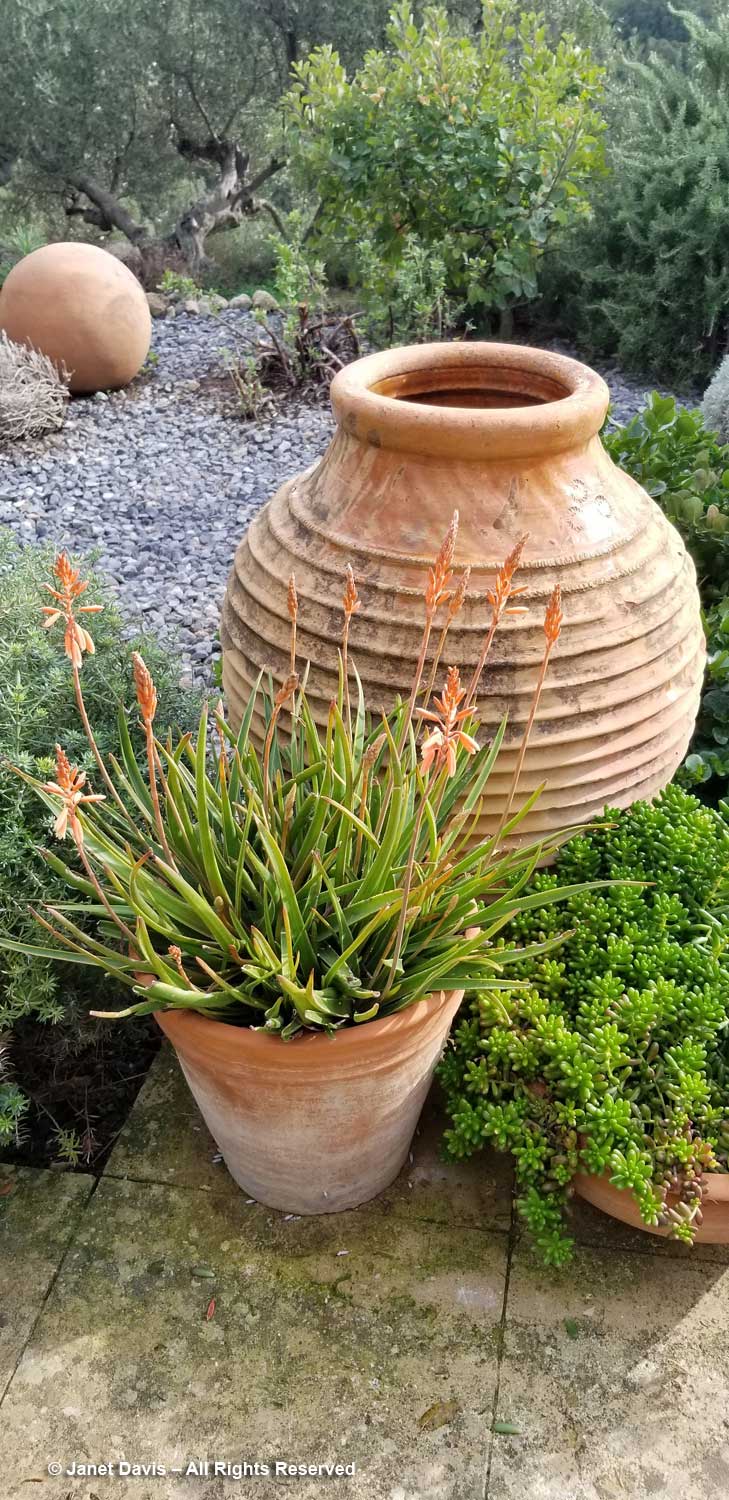
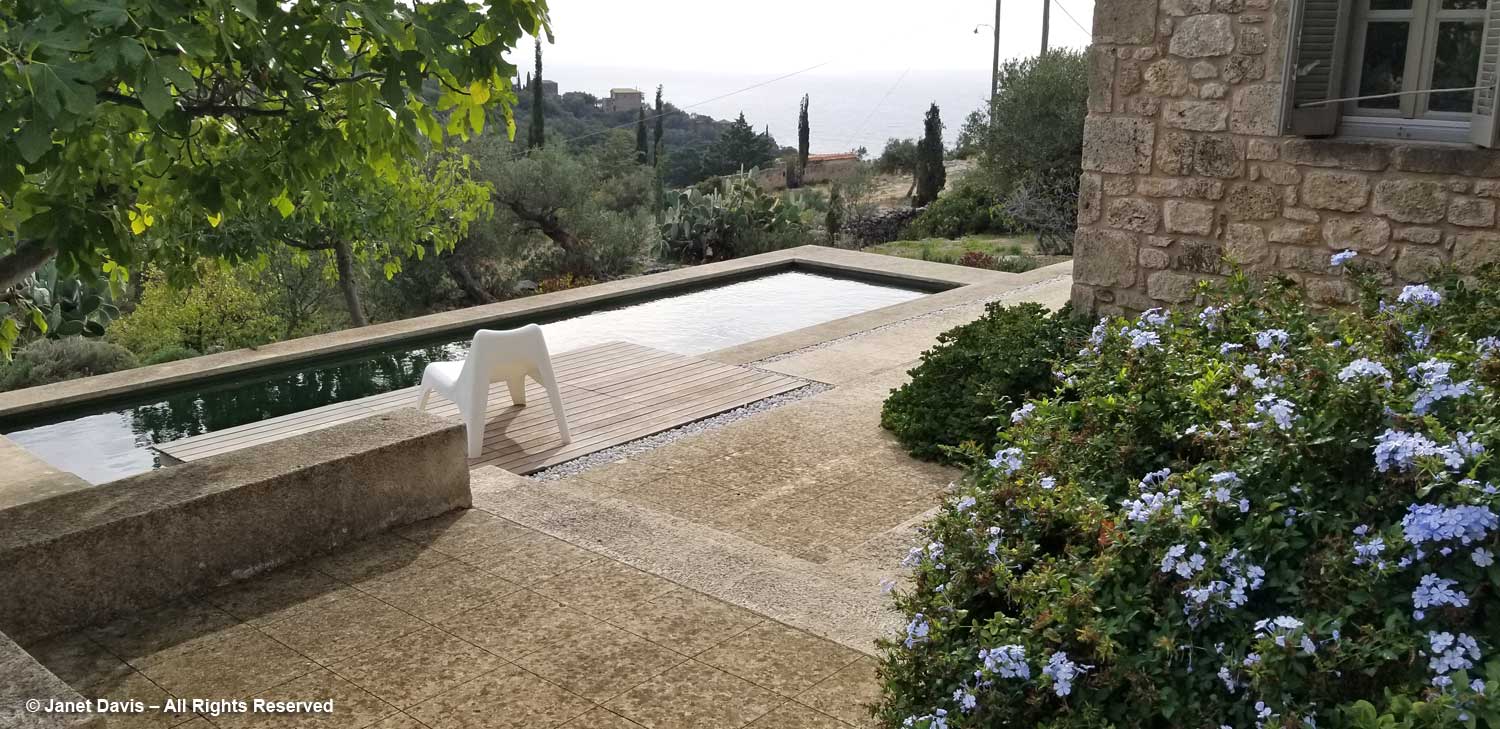
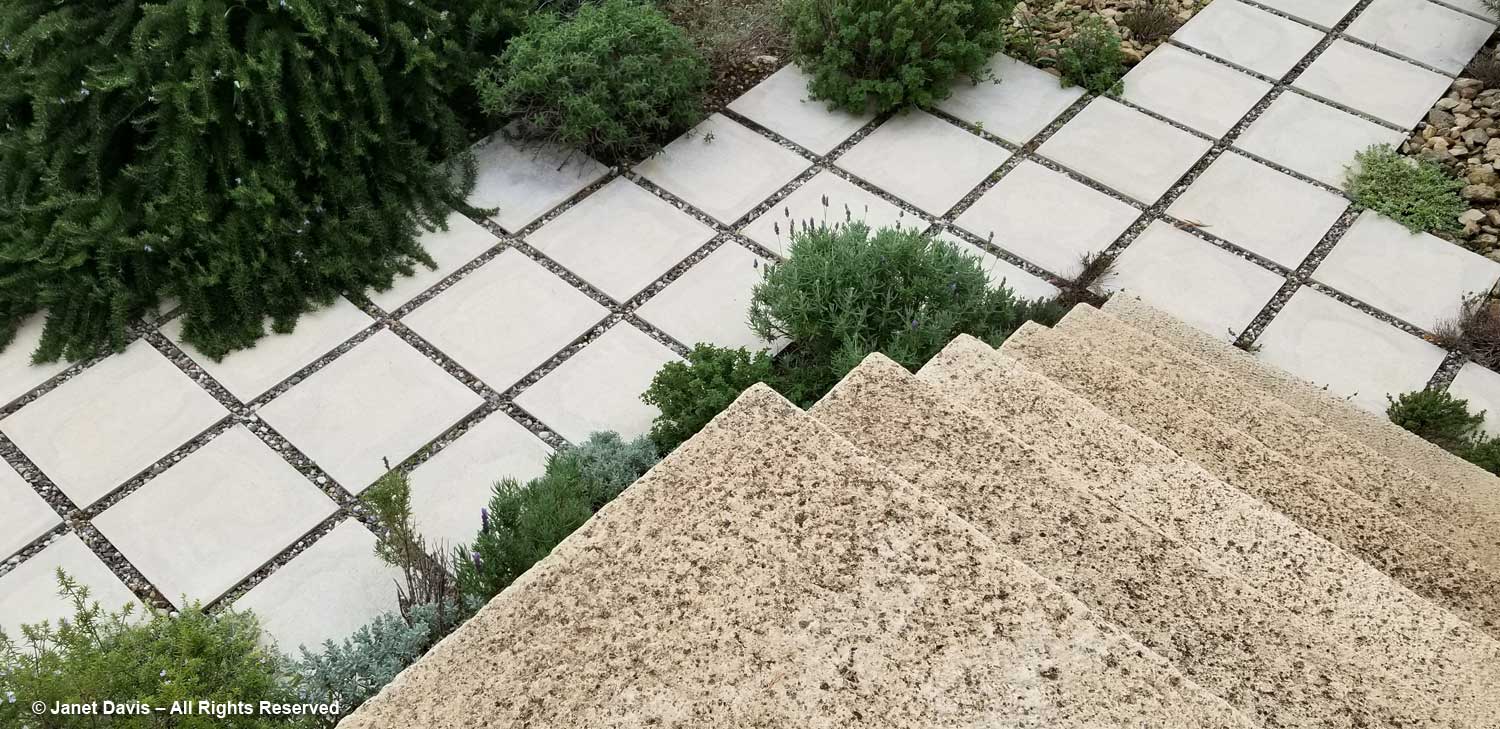

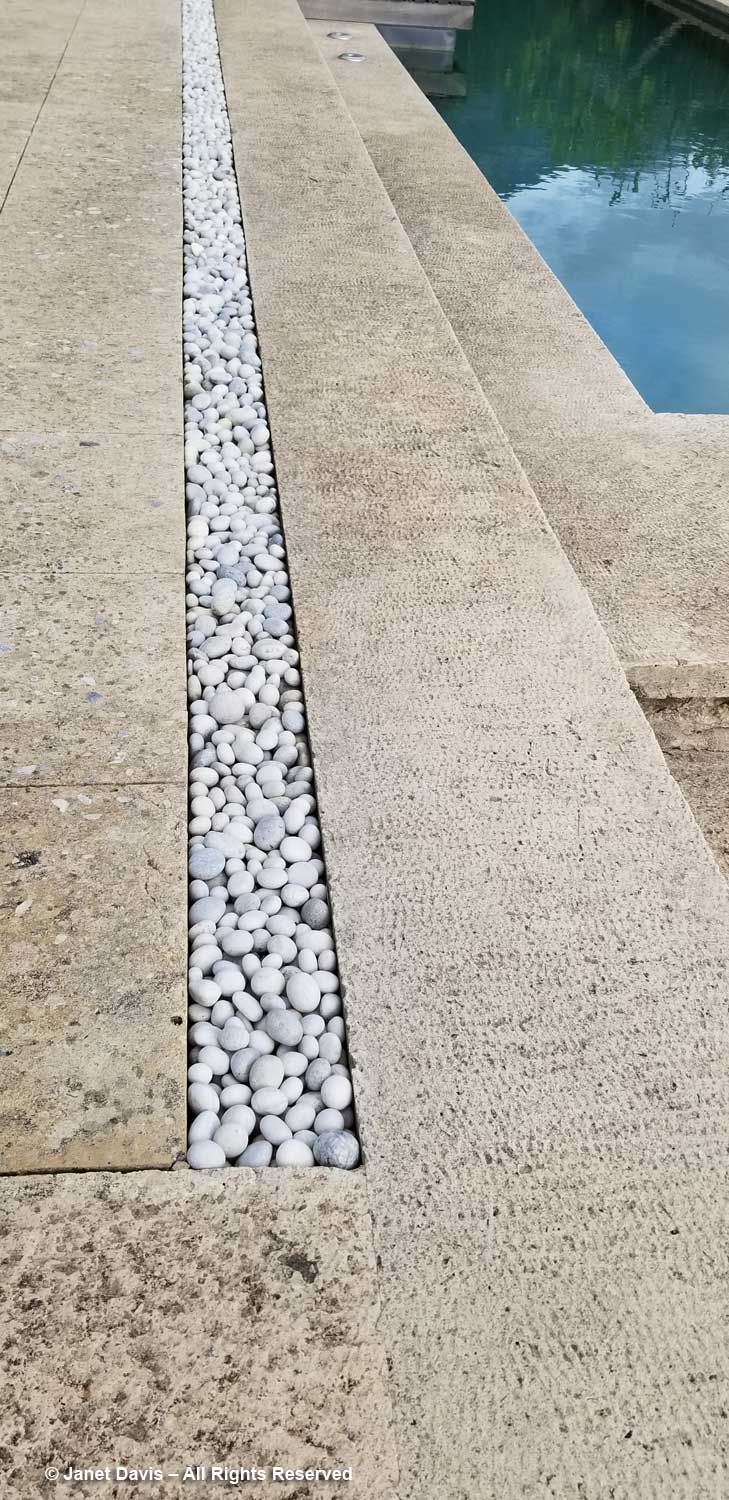
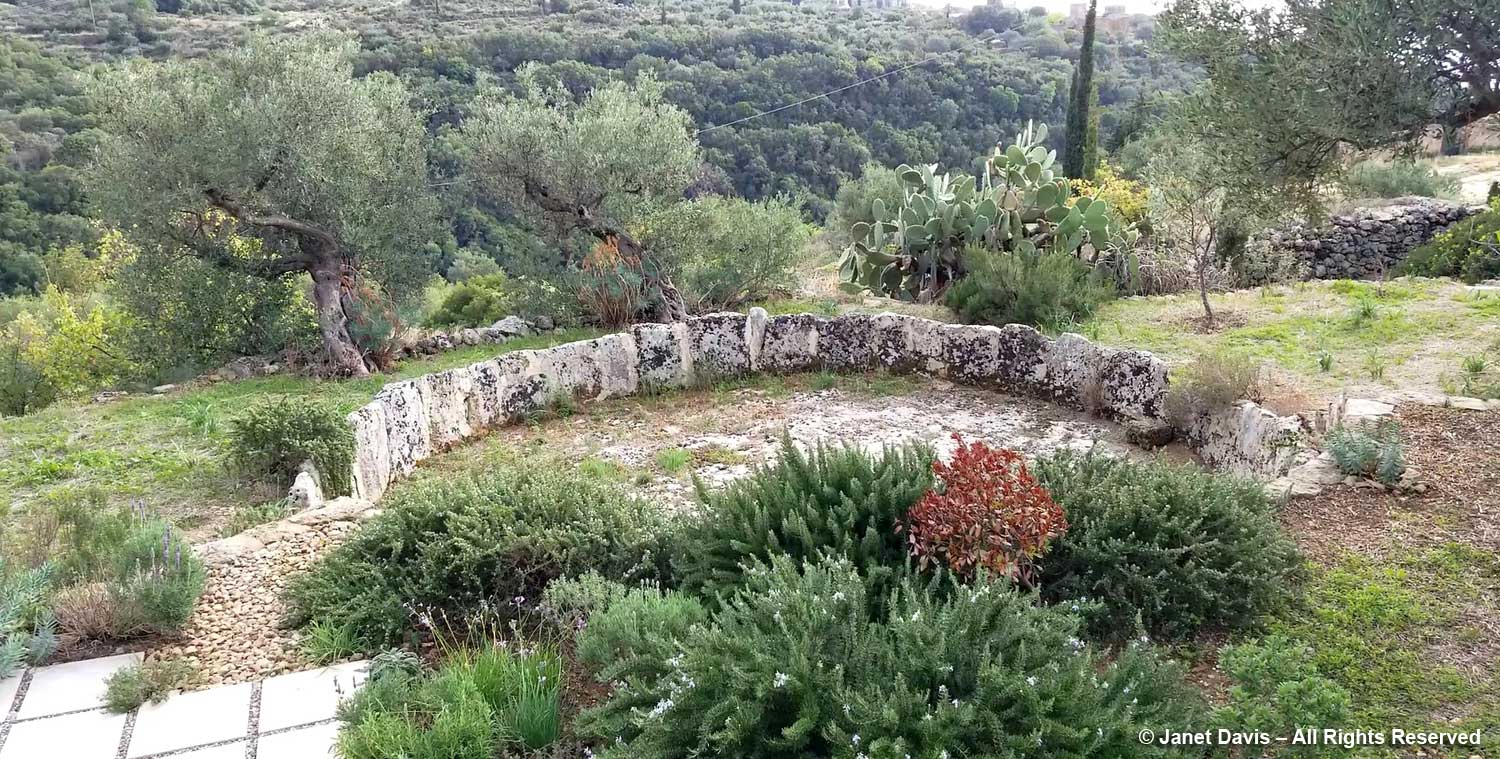
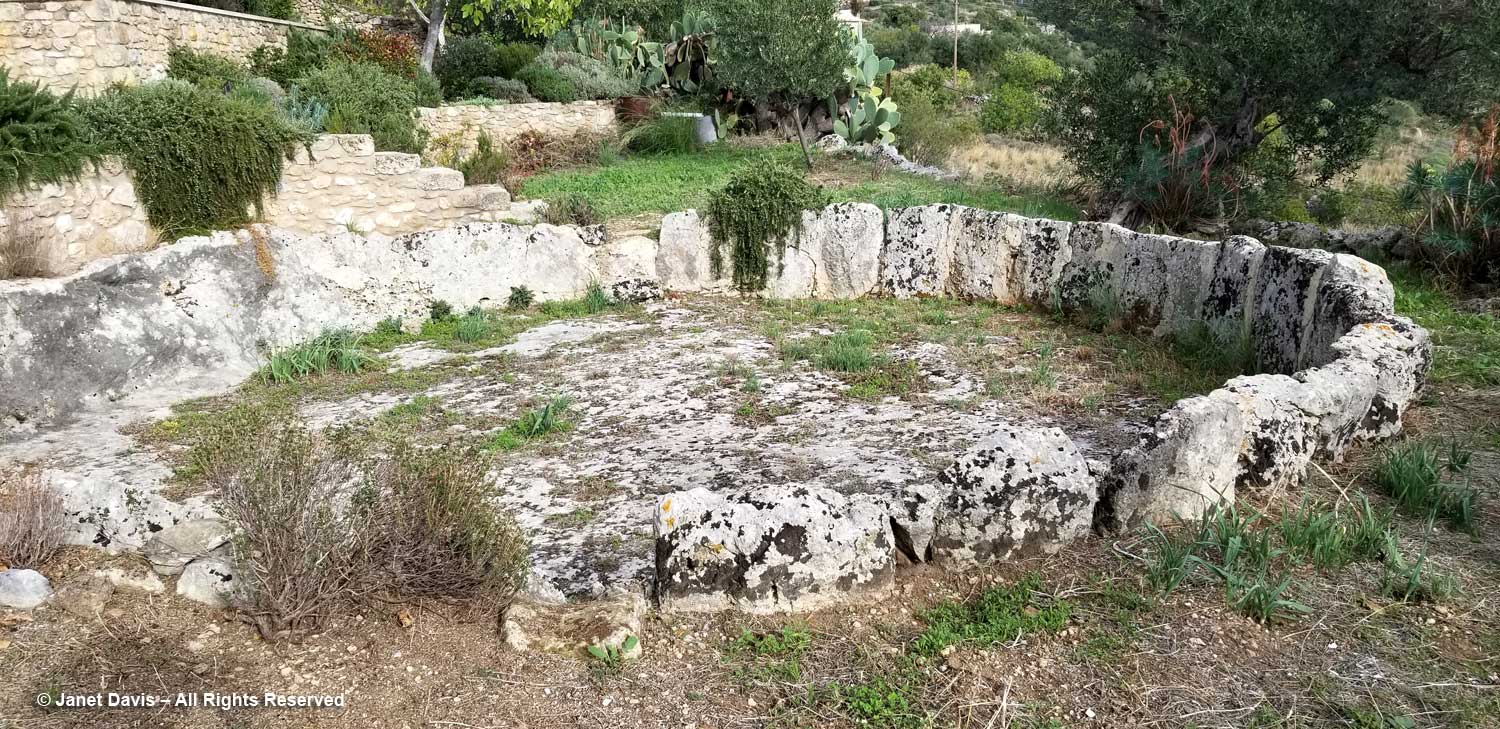
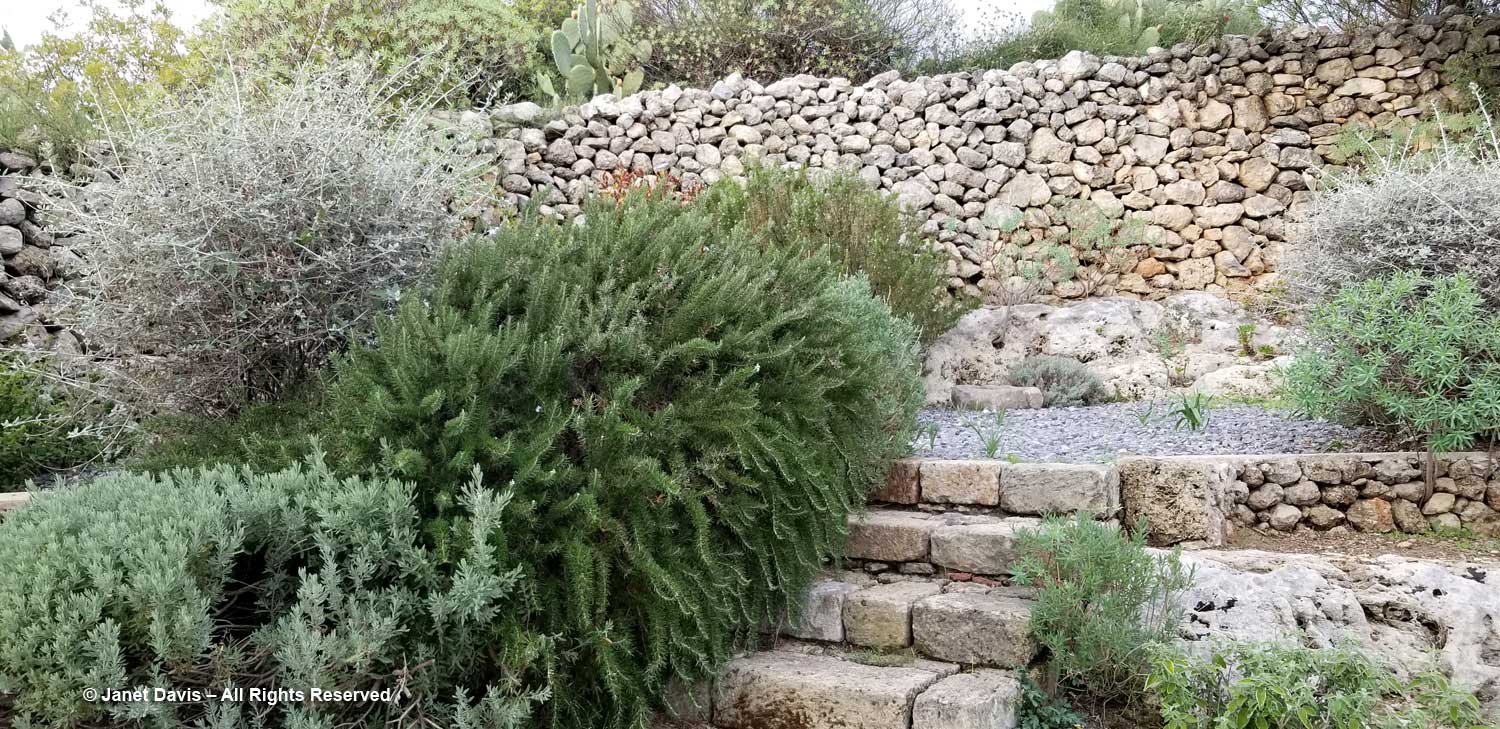
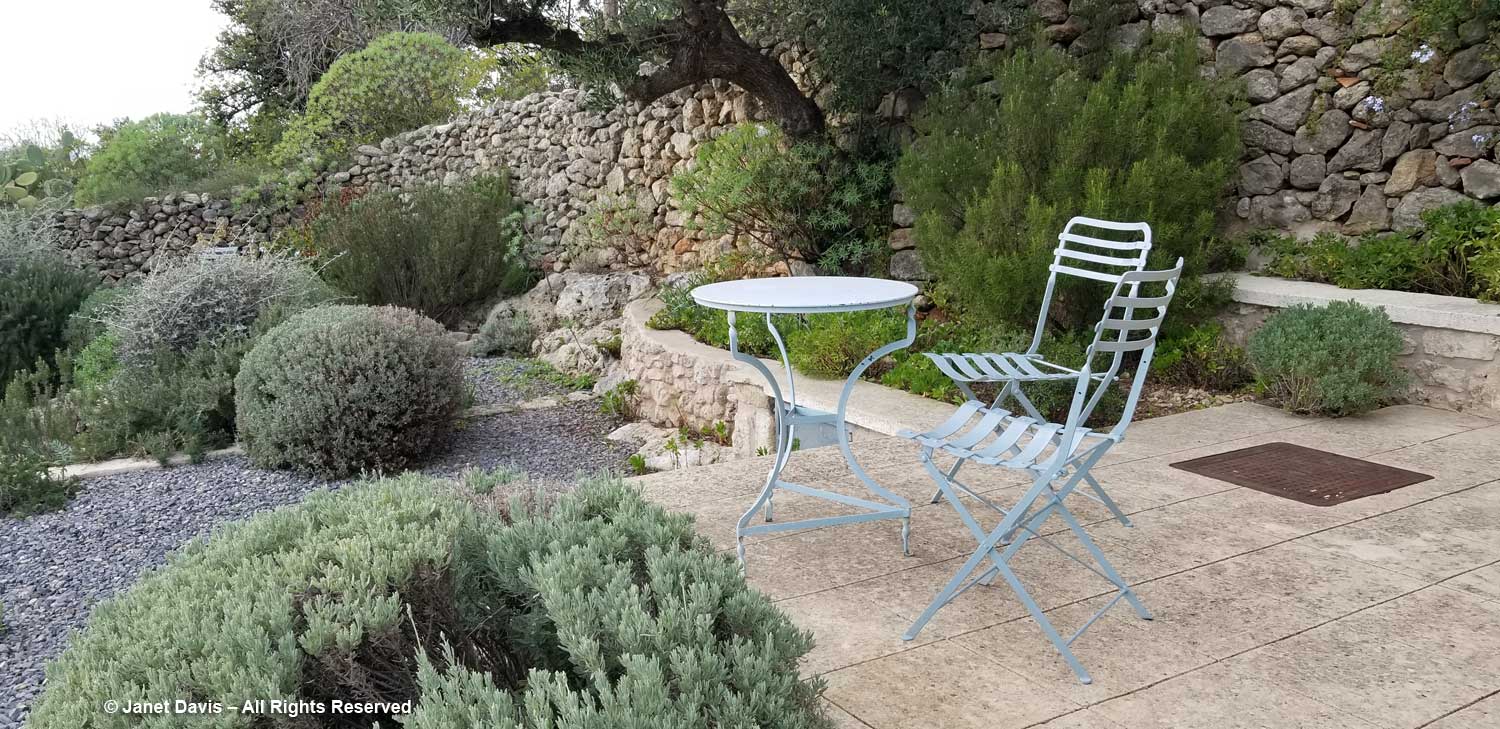
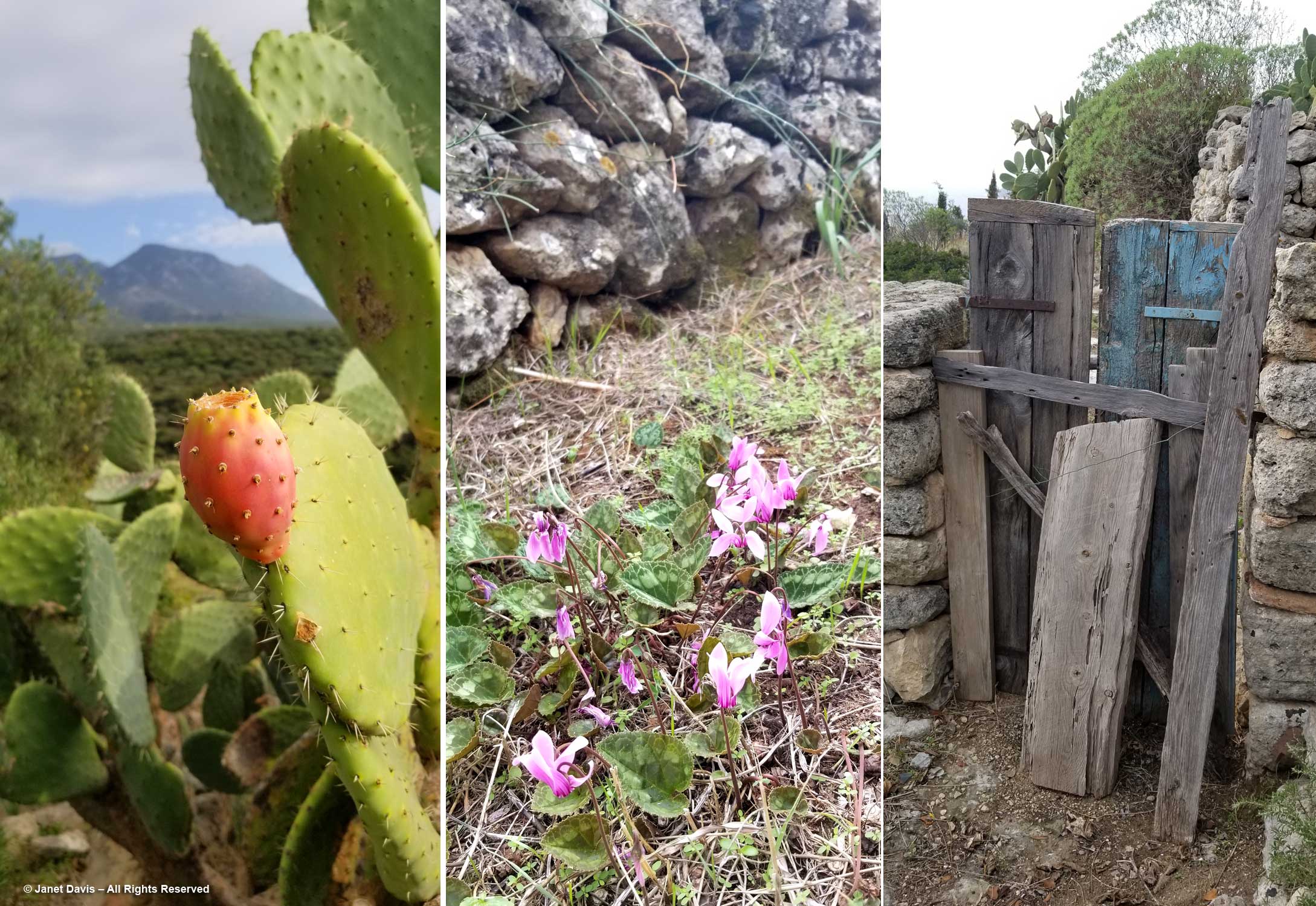
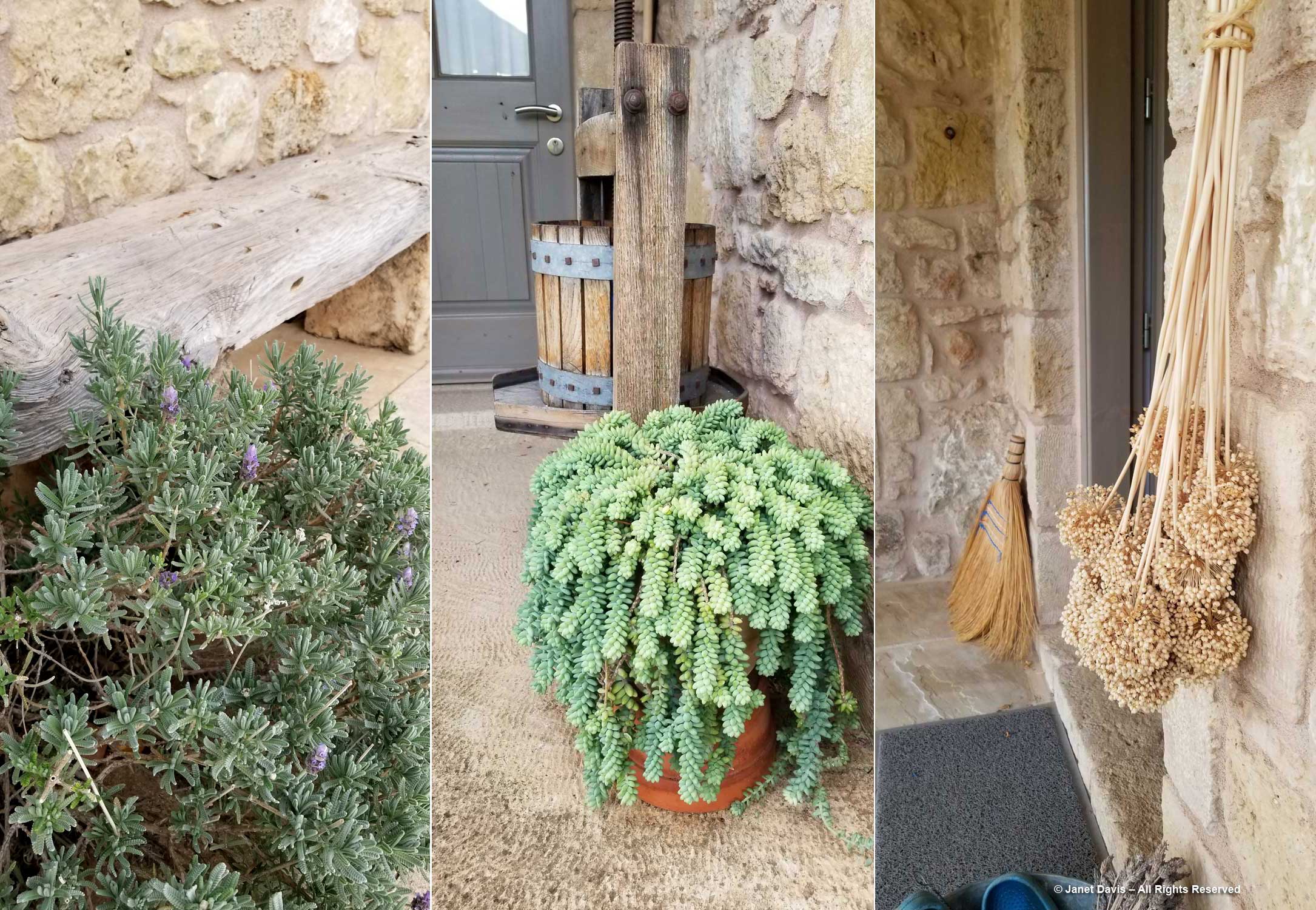
This gray December day in Nova Scotia just got so much better with the beauty and warmth you captured in your post of this wonderful garden. Thank you.
Thank you, Donna. It made my grey Toronto day a little cheerier too.
Sometimes it takes a foreigner’s eye to capture the sense of place in their adopted land. She’s certainly created something that richly reflects the local idiom: elegant woman and serene, beautiful garden! Thanks, (again) Janet!
Thank you Panayoti! You would love this garden and Katerina. And of course you and Liberto could just go driving off into the Greek sunset together.
Panayoti, thank you. But it’s not my adopted land, it’s my inherited land! The Greek genes will out!
And beautiful genes they are!
Good morning, Janet
Just read this wonderful description of Katerina’s garden which I visited with the MGS a few years ago. Your description is magnificent and took me right back there! She has promised to come and visit Villa Kasteli and Villa Livano end of April next year with the Mediterranean Plants and Gardens group.
Thank you so much Lilian. I’m so happy you connected with Katerina, and delighted we were able to see her garden which seems to be a favourite of many.
Thank you for this beautiful post. What a gorgeous Mediterranean garden. Lovely photography too.
Thank you, Holly. It was such a delight to be in Katerina’s garden.
What a beautiful and intriguing garden. I love the stonework and that old wooden gate is just too characterful. I see there are lots of plants that I have in my garden in Cape Town. I love the Plumbago which attracts lots of butterflies. The unaligned paving stones are a lovely innovation with the dark stone in between. What a treat to ‘walk’ through your garden.
Thanks, Lorraine. It was definitely an atmospheric garden and Katerina had evoked the past with it very well.
All of those gorgeous photos of an exceptionally lovely garden (the hardscape and detail shots!) and I am left wondering…were there no agaves?
Loree, thank you! There were definitely agaves in the little village above here. I have a photo of one in flower next to a very picturesque ruin. But I don’t think there were any in Katerina’s garden. But aloe, yes, and lots of cool succulents.